Complete Guide to Why Use Travertine Tiles

Over half of luxury homes today feature natural stone surfaces that blend history with style. Travertine tiles stand out for their rare beauty and ancient origins, tracing back thousands of years to mineral-rich springs near Rome. These tiles do more than decorate—they connect living spaces to a unique geological story. Discover what sets travertine apart, from its striking appearance to the fascinating process that shapes every tile.
Table of Contents
- What Are Travertine Tiles and Their Origins
- Types of Travertine Tiles and Surface Finishes
- Key Features and Benefits of Travertine
- Typical Uses in Residential and Commercial Spaces
- Comparing Travertine Tiles to Other Materials
- Maintenance Needs, Costs, and Common Mistakes
Key Takeaways
| Point | Details |
|---|---|
| Origin & Characteristics | Travertine is a natural limestone formed around mineral springs, known for its unique colors and textures. Each tile showcases distinctive patterns due to its geological formation process. |
| Surface Finishes | There are four main travertine surface finishes: polished, honed, brushed, and tumbled, each offering different aesthetics and functionalities for design purposes. |
| Applications | Travertine’s versatility makes it suitable for various spaces, including residential flooring, kitchen surfaces, and commercial environments like lobbies and spas. |
| Maintenance Needs | To preserve travertine’s beauty, use pH-neutral cleaners and seal the tiles every 3-5 years, avoiding harsh chemicals that may damage the stone. |
What Are Travertine Tiles and Their Origins
Travertine is a stunning natural stone with a rich geological history that transforms spaces with its unique aesthetic and remarkable character. Originating from mineral-rich geological formations, travertine represents one of nature’s most elegant stone creations.
According to Wikipedia, travertine is a terrestrial limestone deposited around mineral springs, particularly hot springs. Its formation process creates distinctive variations in color and texture, ranging from white and cream to tan and rusty hues. The name itself tells a story - derived from the Italian word ‘travertino’, which originates from the Latin ‘tiburtinus’, meaning ‘of Tibur’ (modern-day Tivoli near Rome, Italy).
The stone’s fascinating formation process involves complex geological interactions. As Natural Stone Institute explains, travertine forms when hot water dissolves limestone, bringing granules of stone from beneath the surface. These materials collect and cool, crystallizing into solid stone with beautiful banded patterns created by iron compounds and organic impurities.
Travertine tiles offer a connection to an ancient geological narrative. Their natural formation process means each tile carries unique characteristics - no two pieces are exactly alike. Whether used in modern minimalist designs or classic Mediterranean-inspired spaces, travertine brings a sense of timeless elegance and natural sophistication to any environment.
Key characteristics of travertine include:
- Naturally occurring limestone formation
- Varied color palette from white to rusty tones
- Distinctive textural patterns
- Formed around mineral-rich hot springs
- Unique geological backstory
For more insights into this remarkable stone, explore our article on the enduring beauty of travertine flooring.
Types of Travertine Tiles and Surface Finishes
Travertine tiles come in a fascinating array of types and surface finishes, each offering unique aesthetic and functional characteristics that can transform interior and exterior spaces. Understanding these variations allows designers and homeowners to select the perfect stone for their specific design vision and practical requirements.
According to Learning Center, travertine can be categorized into four primary surface finishes: polished, honed, brushed, and tumbled. Each finish creates a distinctive look and feel. Polished and honed surfaces provide smooth textures, while brushed and tumbled finishes introduce more rugged, textural elements to the stone.
Honed travertine is particularly popular in residential settings. As the Learning Center notes, this finish offers a flat, smooth surface with a matte appearance that subtly diffuses light, creating a soft and understated elegance. The muted reflection makes honed travertine an excellent choice for spaces seeking a refined yet natural aesthetic.
The diversity of travertine finishes allows for remarkable design flexibility.
 Polished finishes create a glossy, reflective surface that adds drama and sophistication. Tumbled finishes introduce a rustic, weathered appearance with softened edges, perfect for creating an aged or vintage look. Brushed finishes provide a slightly textured surface that sits between the smooth honed and the rough tumbled options.
Polished finishes create a glossy, reflective surface that adds drama and sophistication. Tumbled finishes introduce a rustic, weathered appearance with softened edges, perfect for creating an aged or vintage look. Brushed finishes provide a slightly textured surface that sits between the smooth honed and the rough tumbled options.
When selecting travertine tiles, consider these key factors:
- Desired aesthetic mood
- Room’s lighting conditions
- Foot traffic and wear expectations
- Maintenance requirements
- Overall design theme
For a deeper exploration of tile finishes that can elevate your design, check out our guide to travertine tile finishes.
Key Features and Benefits of Travertine
Travertine offers an extraordinary blend of natural beauty and practical performance that sets it apart from other stone materials. Its unique geological characteristics make it a compelling choice for discerning designers and homeowners seeking both aesthetic elegance and functional durability.
According to the Natural Stone Institute, travertine is distinguished by its distinctive surface texture, characterized by multiple holes and natural depressions formed during its geological creation. These naturally occurring voids aren’t structural weaknesses but rather signature elements that contribute to the stone’s distinctive character. A high-quality sealer can effectively protect these unique surface features in high-traffic or potentially messy environments.
Stone Specialist highlights the stone’s remarkable structural composition, noting its light coloration and beautiful banding resulting from iron compounds and organic impurities. The stone’s unique matrix combines a strongly cemented, dense calcite structure with intricate void patterns, creating both aesthetic intrigue and exceptional structural integrity.
Travertine’s versatility extends beyond its visual appeal. Its natural thermal properties make it comfortable in various climates, while its durability ensures long-lasting performance. The stone adapts beautifully to different design aesthetics - from rustic Mediterranean styles to sleek contemporary spaces.
Key benefits of travertine include:
- Natural, unique surface patterns
- Exceptional durability
- Thermal comfort
- Versatile design adaptability
- Rich geological heritage
- Low maintenance requirements
To explore how travertine compares with other natural stones, check out our comprehensive guide on marble and travertine differences.
Typical Uses in Residential and Commercial Spaces
Travertine offers remarkable versatility, making it an exceptional choice for both residential and commercial design applications. Its natural beauty and durability create stunning environments across multiple architectural and interior design contexts.
According to Wikipedia, travertine is one of the most frequently used stones in modern architecture, finding applications in diverse settings. From indoor home and business flooring to outdoor patio surfaces, spa walls and ceilings, façades, and wall cladding, travertine demonstrates extraordinary adaptability across different architectural spaces.
The Natural Stone Institute highlights travertine’s widespread use, particularly in Mediterranean-influenced regions like the United States. The stone is especially popular for paving patios, creating garden paths, designing elegant showers, developing sophisticated wall coverings, and crafting exceptional countertops.
In residential spaces, travertine transforms ordinary areas into extraordinary environments. Kitchens, bathrooms, living rooms, and outdoor entertainment areas all benefit from its natural elegance. Commercial spaces like hotels, restaurants, museums, and office lobbies leverage travertine’s timeless aesthetic to create memorable, sophisticated environments.
Key application areas include:
- Residential flooring
- Kitchen and bathroom surfaces
- Outdoor patio and pool surrounds
- Commercial lobby and reception areas
- Spa and wellness center design
- Accent walls and decorative features
- Fireplace surrounds
- Shower and bathroom wall cladding
To explore creative design possibilities, discover our timeless mosaic pattern guide for innovative travertine applications.
Comparing Travertine Tiles to Other Materials
Natural stone tiles each possess unique characteristics, and understanding how travertine compares to other materials helps designers and homeowners make informed selections. While many stone options exist, travertine offers distinctive qualities that set it apart from traditional flooring and wall covering materials.
According to Wikipedia, travertine is sometimes referred to as travertine limestone or travertine marble, though it is properly classified as a limestone, not marble. Its hallmark feature is the characteristic pitted holes and troughs across its surface, creating a texture that distinguishes it from smoother stone alternatives like granite or marble.
Stone Specialist explains that travertine is closer to limestone because it has not undergone the metamorphic transformation that converts limestone into marble. This unique formation process means travertine retains more of its original geological character, with various organic materials potentially embedded within its structure during formation.
Compared to other materials, travertine offers several compelling advantages.
Key comparative characteristics include:
- More natural variation than ceramic
- Lower cost compared to marble
- Softer aesthetic than granite
- Unique geological story
- Authentic natural formation
- Versatile design potential
For those interested in alternative design approaches, explore our guide on achieving a timeless look with porcelain tiles featuring a travertine appearance.
Maintenance Needs, Costs, and Common Mistakes
Travertine tiles require thoughtful care and strategic maintenance to preserve their natural beauty and structural integrity. Understanding the nuanced requirements of this stunning natural stone can help homeowners and designers maximize their investment and prevent costly errors.
Learning Center warns that travertine’s minerals are highly reactive with acidic solutions. Substances like orange juice, vinegar, or wine can potentially damage the stone’s surface, making it crucial to consider the environment where travertine will be installed and what elements it might encounter.
According to the Natural Stone Institute, a high-quality sealer is essential for protecting travertine tiles in high-traffic or potentially messy areas. The stone’s characteristic surface holes and depressions, while adding unique character, also require careful maintenance to prevent dirt accumulation and potential damage.
Common maintenance mistakes include using harsh chemical cleaners, neglecting regular sealing, and failing to address spills immediately. Travertine’s porous nature means it absorbs liquids quickly, so prompt cleaning and periodic professional sealing are non-negotiable for long-term preservation.
Key maintenance considerations:
- Use pH-neutral stone cleaners
- Seal tiles every 3-5 years
- Wipe spills immediately
- Avoid acidic cleaning solutions
- Use soft, non-abrasive cleaning tools
- Protect from heavy impacts
- Regular professional inspection
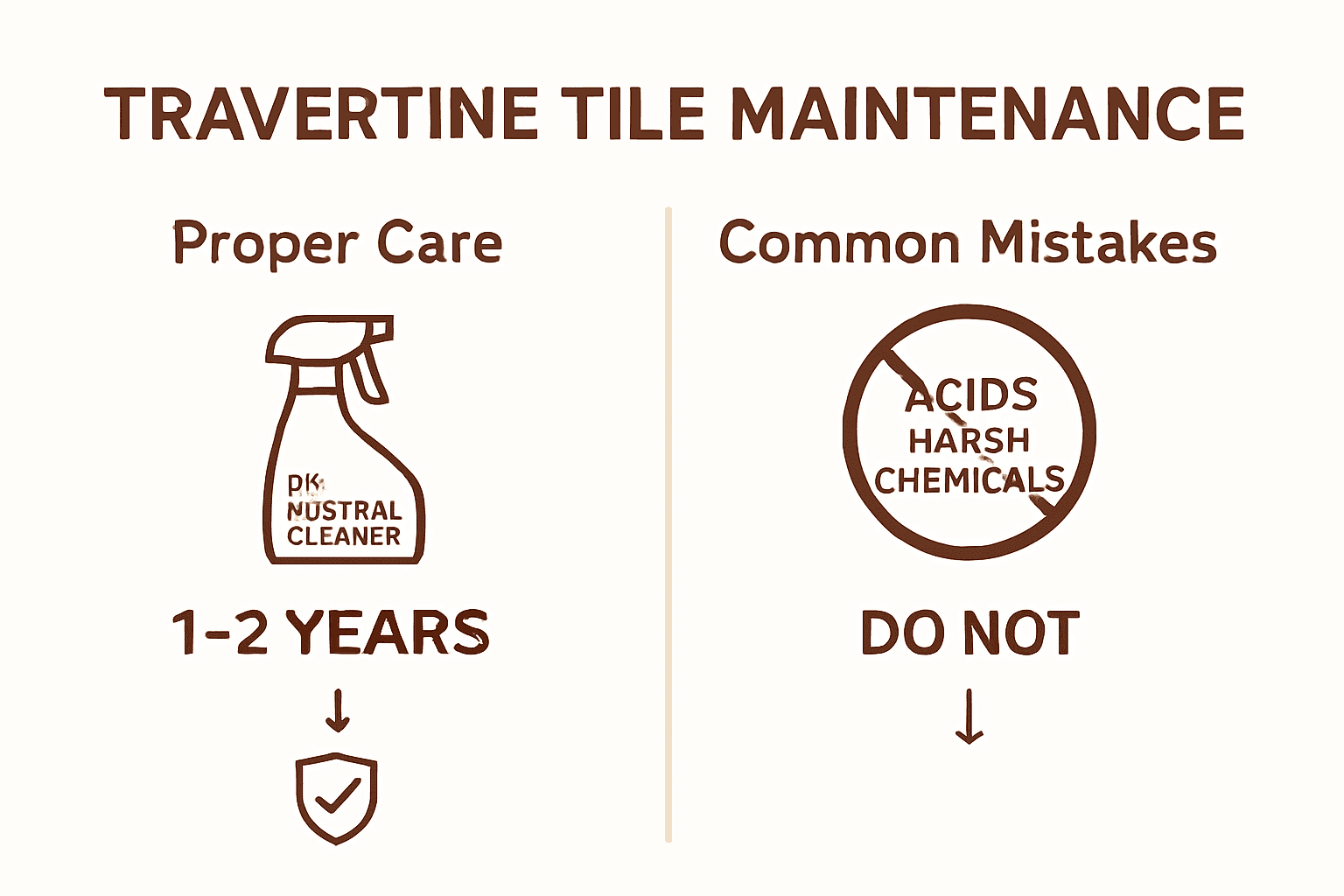
To delve deeper into proper tile care, explore our guide to understanding tile differences and maintenance.
Discover Timeless Elegance with Travertine Tiles from Surfaces Galore
Choosing travertine tiles means embracing natural beauty that tells a story of ancient formations and unique textures. This article highlights common concerns like selecting the right finish, maintaining the stone’s durability, and achieving the perfect aesthetic that balances elegance with practical comfort. If you want to avoid costly mistakes such as using harsh cleaners or neglecting sealing, finding a trustworthy source for premium travertine is essential.
At Surfaces Galore, we understand the challenge of sourcing authentic travertine tiles that meet your design goals and maintenance needs. Our direct import of premium natural stone offers you exceptional durability, versatile surface finishes like honed or tumbled, and an authentic geological backstory to enrich your space with timeless beauty.
Elevate your project today with our stunning array of travertine tiles and mosaics crafted to inspire both elegance and lasting performance.
Experience the difference quality makes when you visit Surfaces Galore and explore how our collection can bring your vision to life.
Ready to start your journey with travertine?
Discover expert insights and design ideas in our travertine tile finishes guide to choose the perfect texture and look.

Transform your spaces with natural stone that lasts and impresses. Browse our premium selection and place your order now at Surfaces Galore to secure authentic travertine tiles delivered nationwide.
Frequently Asked Questions
What are the key characteristics of travertine tiles?
Travertine tiles are made from naturally occurring limestone and feature a varied color palette, distinctive textural patterns, and unique geological formations. Each tile is unique, providing a rich aesthetic that ranges from white and cream to tan and rusty hues.
How should I maintain travertine tiles?
To maintain travertine tiles, use pH-neutral stone cleaners, seal them every 3-5 years, promptly wipe up spills, and avoid acidic cleaning solutions. Regular inspections and using soft, non-abrasive tools will also help preserve their appearance and integrity.
What are the different types of surface finishes for travertine tiles?
Travertine tiles come in various surface finishes: polished, honed, brushed, and tumbled. Polished finishes give a glossy look, honed offers a matte surface, brushed adds texture, and tumbled creates a rustic appearance with softened edges.
How does travertine compare to other natural stone materials?
Travertine differs from other natural stones like marble and granite in its texture and formation. It has more natural variation than ceramic and offers a softer aesthetic than granite, making it a versatile choice for many design styles. Its unique geological story and authenticity further enhance its appeal.

 Best Selling Marble Collections
Best Selling Marble Collections
 Arabescato Corchia
Arabescato Corchia Bardiglio
Bardiglio Bianco Dolomite
Bianco Dolomite 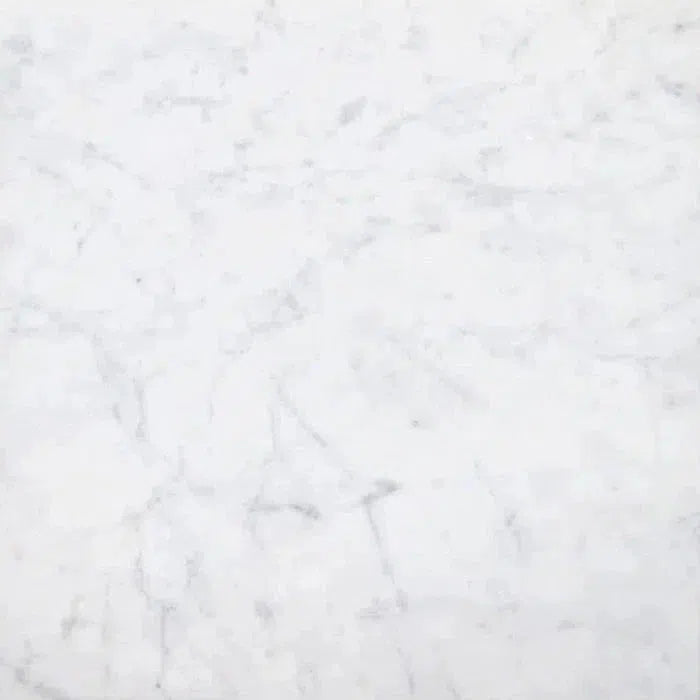 Carrara White
Carrara White 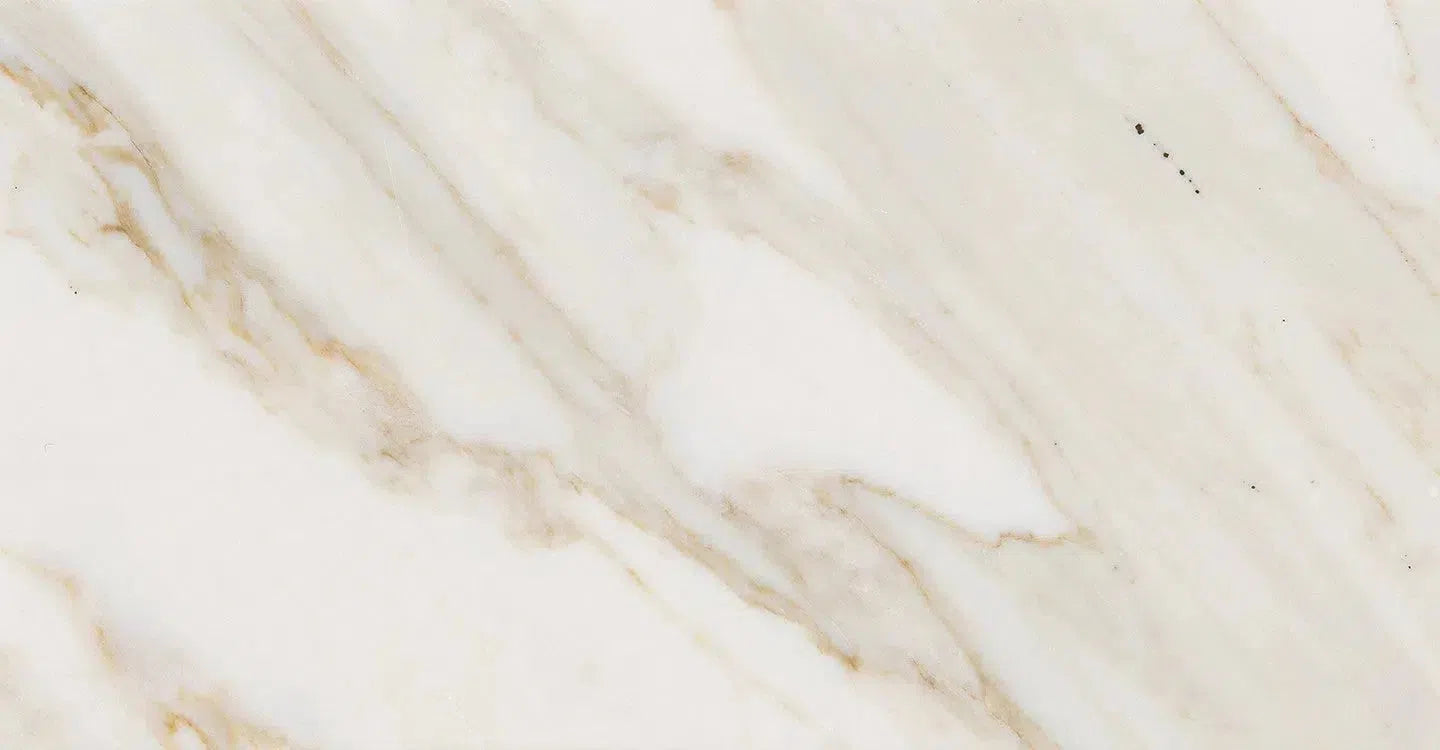 Calacatta Gold
Calacatta Gold Crema Marfil
Crema Marfil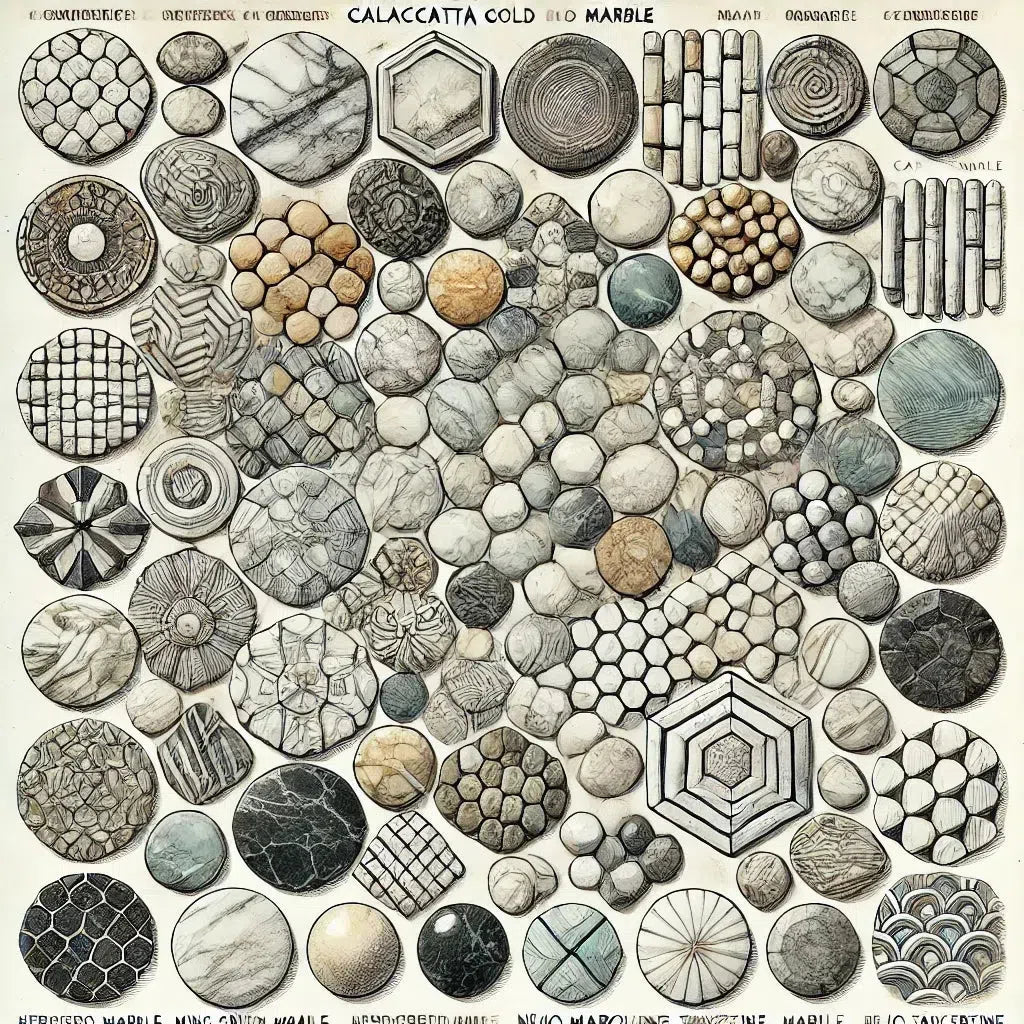 Custom Made Mosaic
Custom Made Mosaic Emperador Dark
Emperador Dark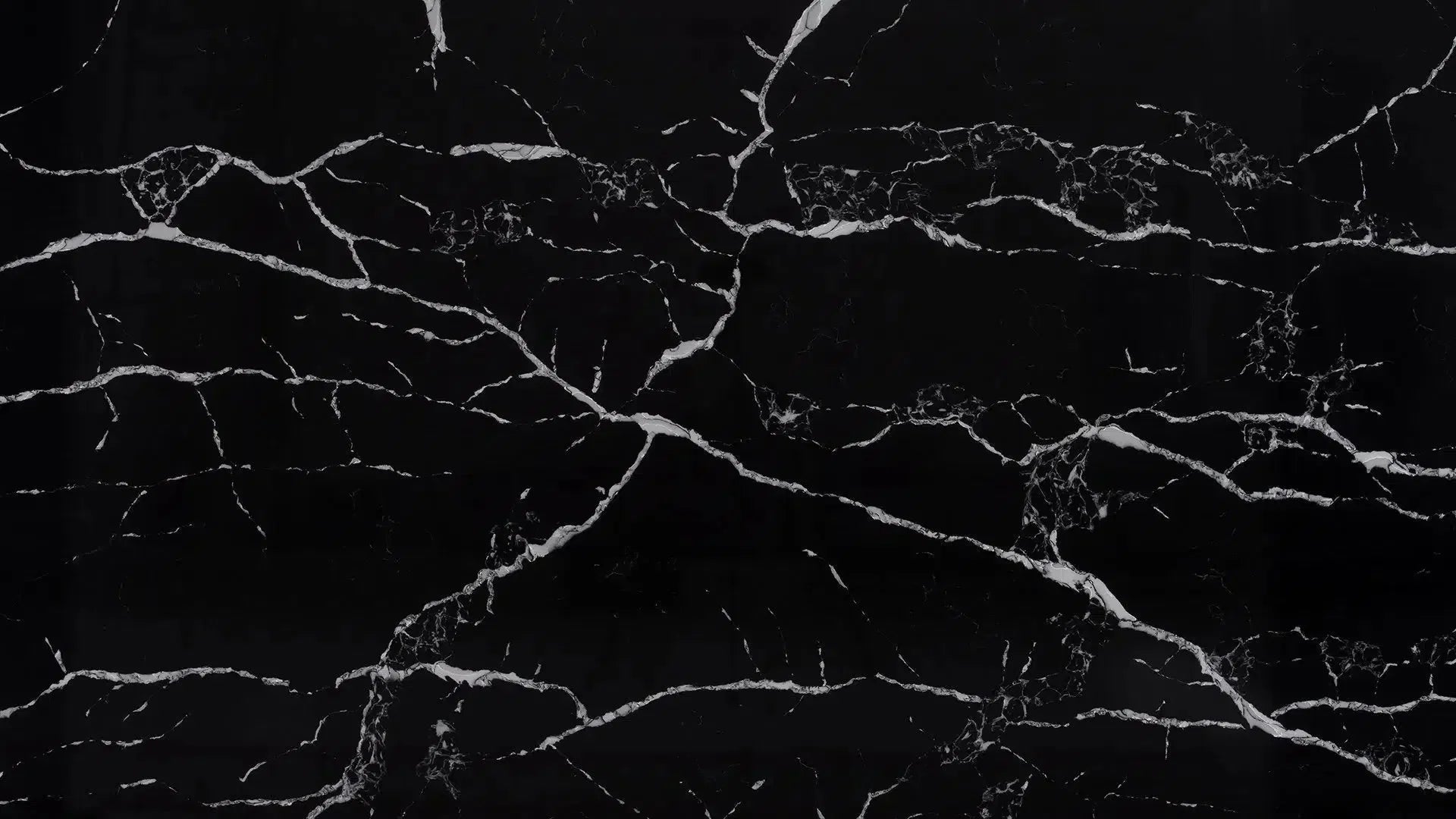 Nero Marquina
Nero Marquina Ming Green Marble
Ming Green Marble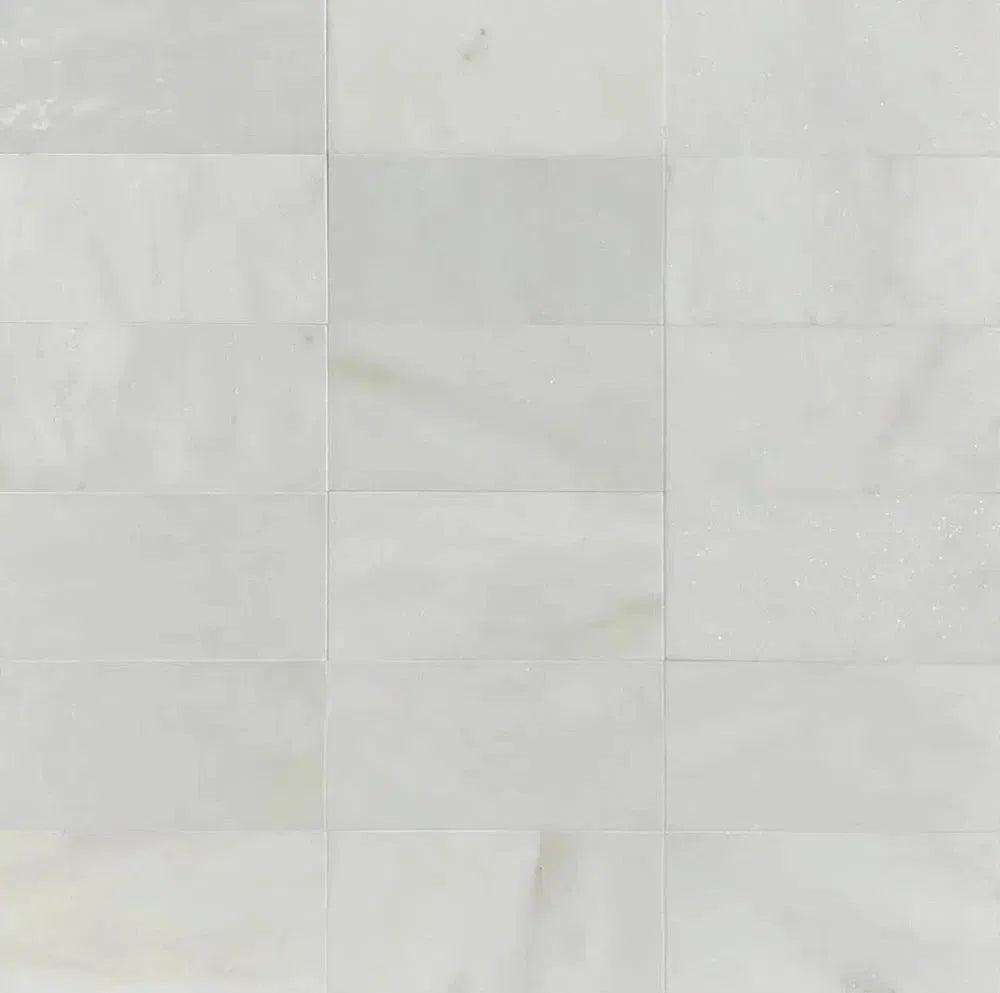 Oriental White Marble (Asian Statuary Marble)
Oriental White Marble (Asian Statuary Marble)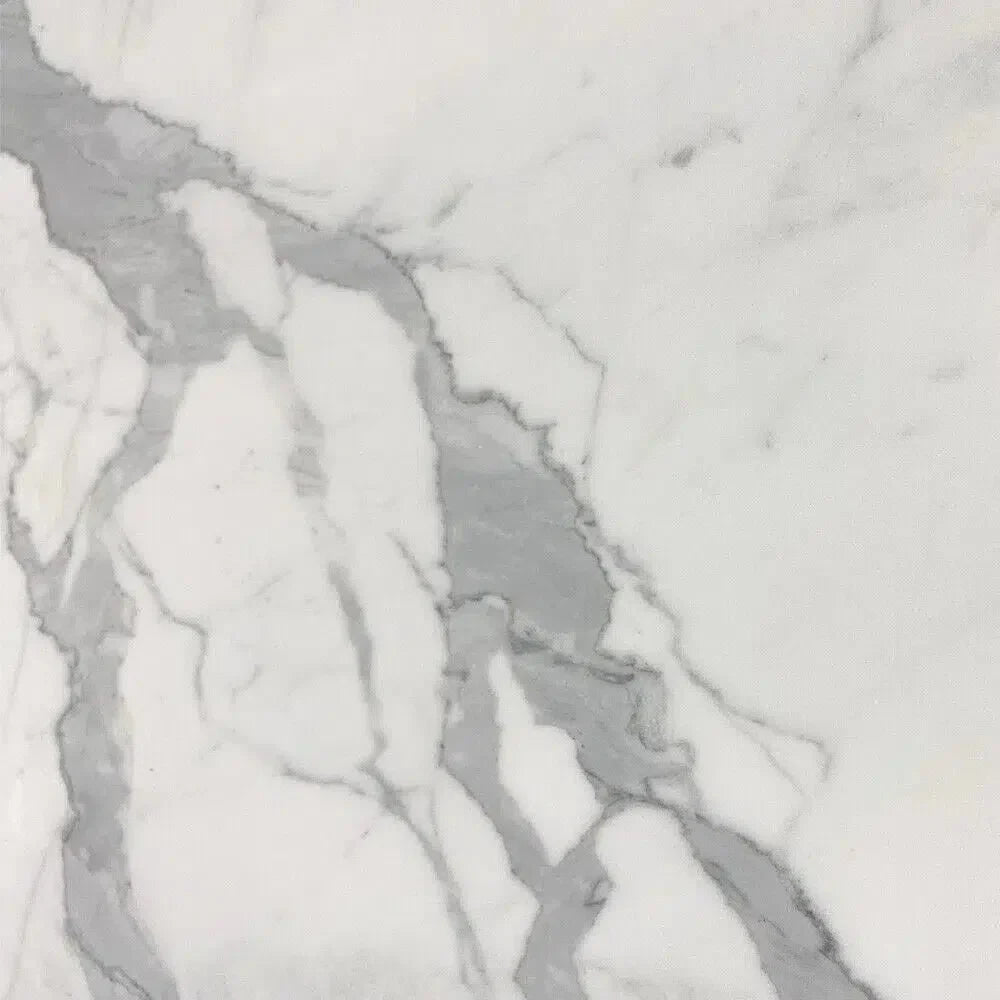 Statuary - Statuario White (Italian) Marble
Statuary - Statuario White (Italian) Marble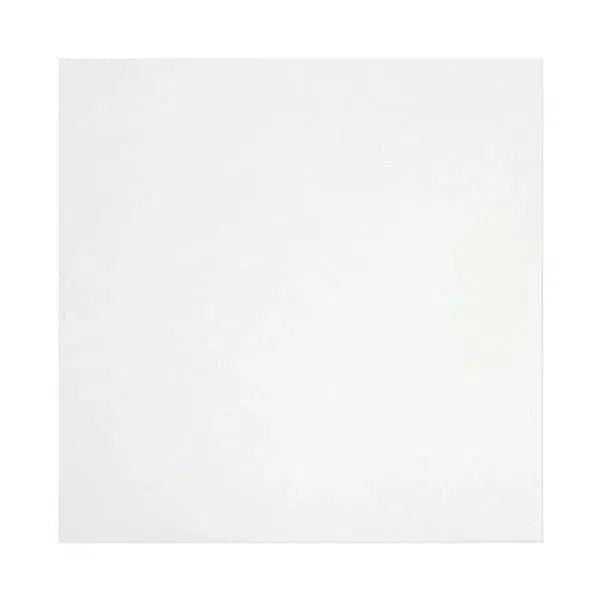 Thassos White
Thassos White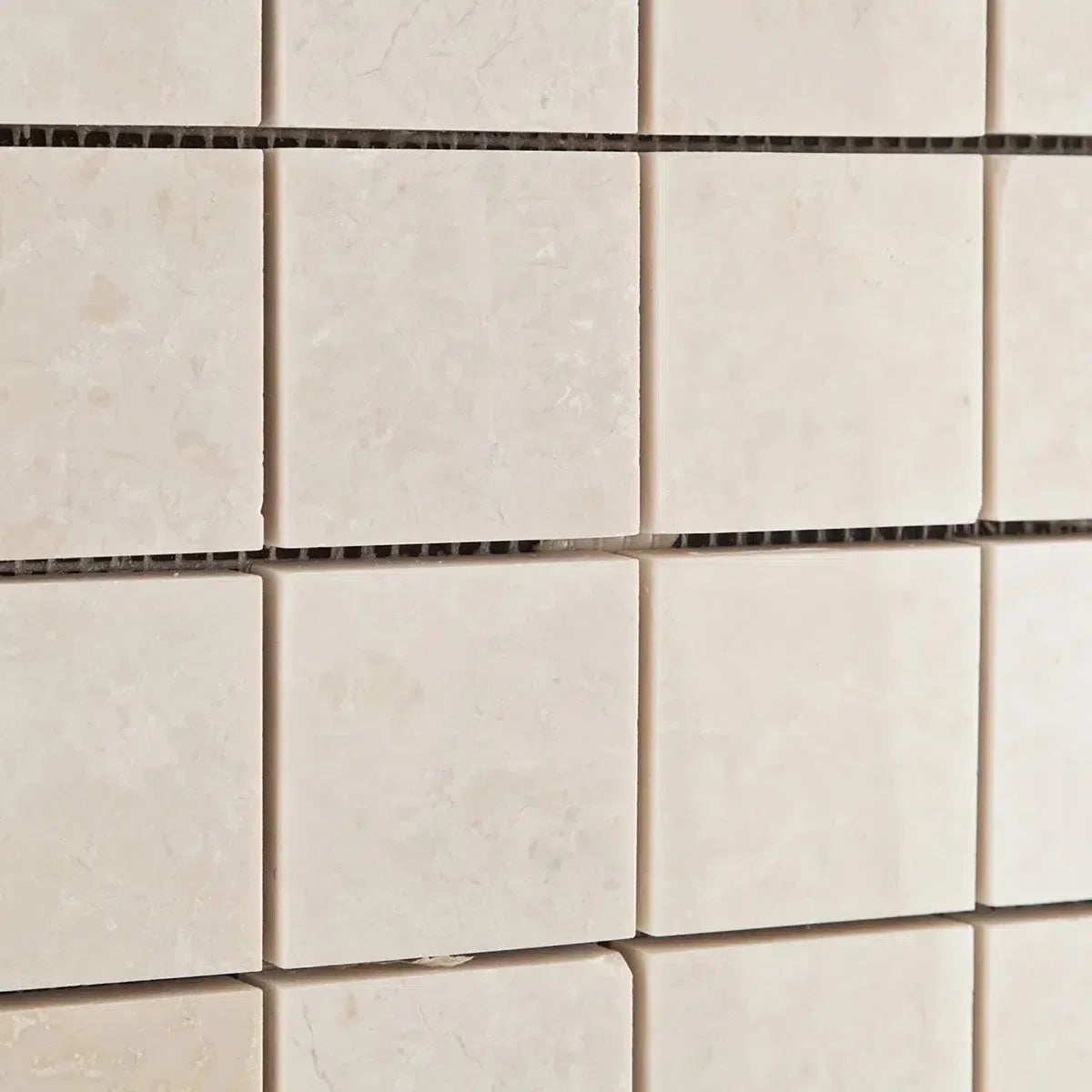 White Pearl/Botticino Beige Marble
White Pearl/Botticino Beige Marble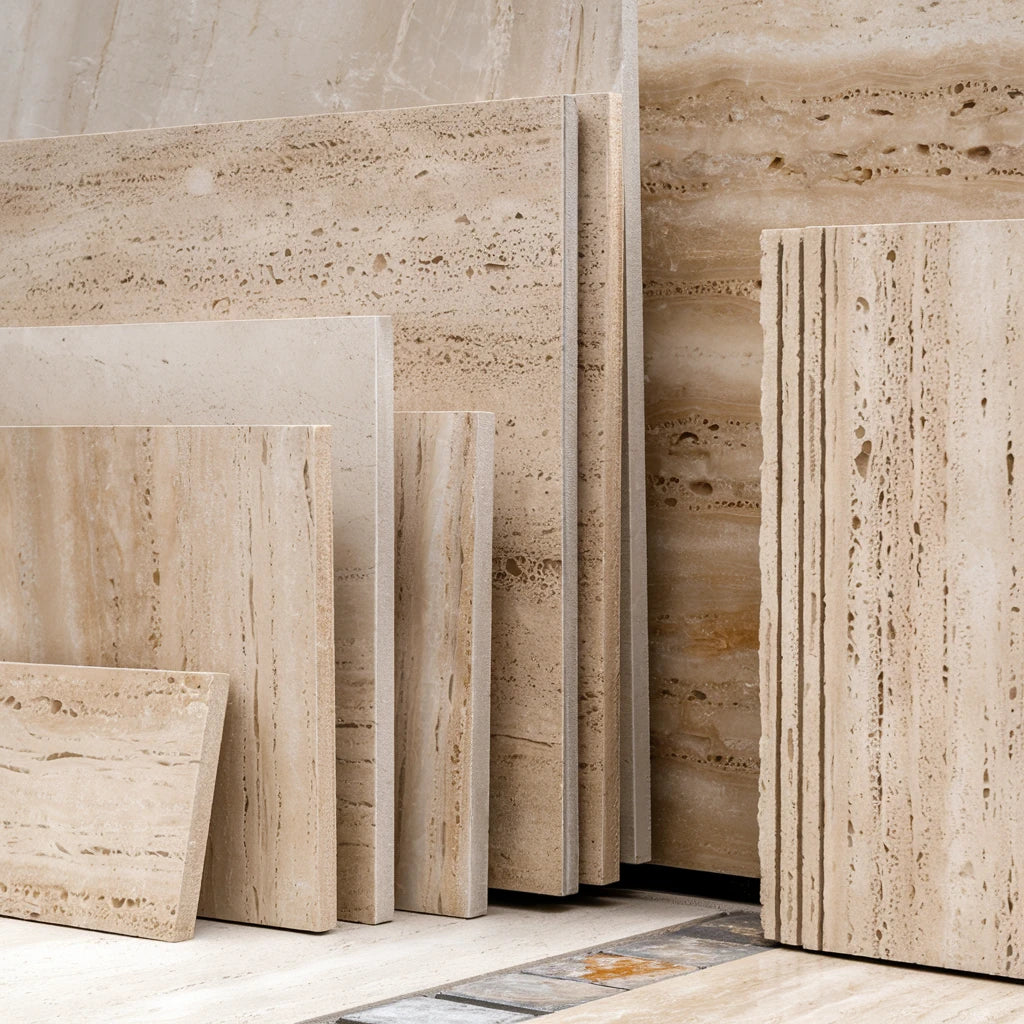 Best Selling Travertine Collections
Best Selling Travertine Collections
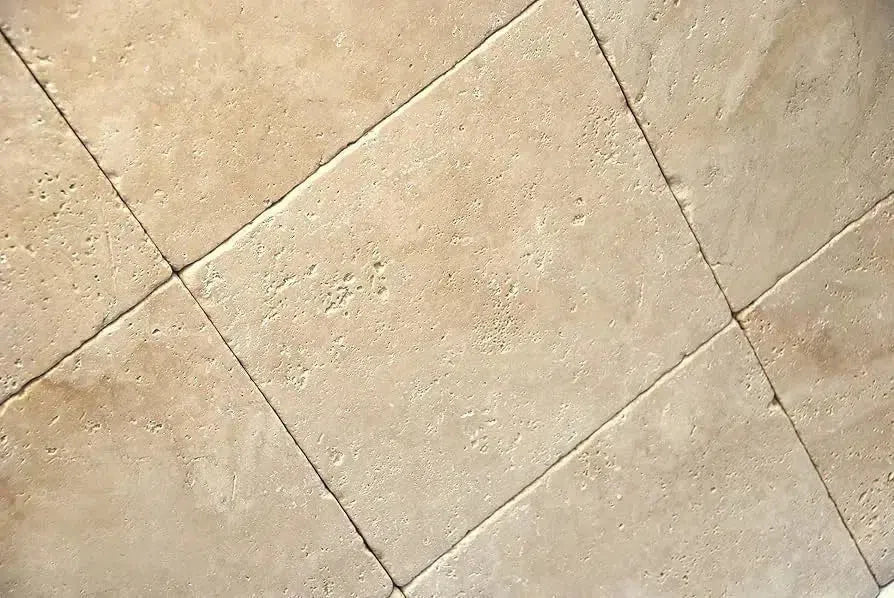 Ivory Travertine
Ivory Travertine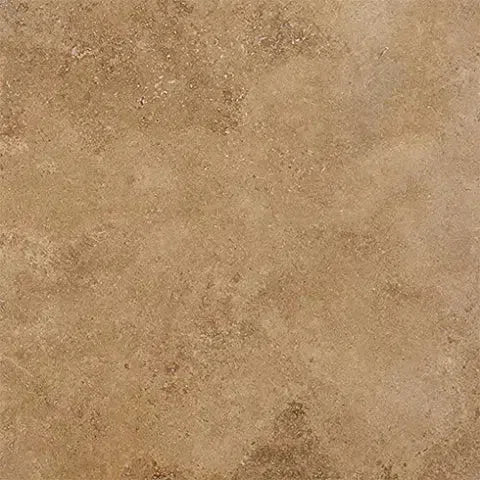 Noce Travertine
Noce Travertine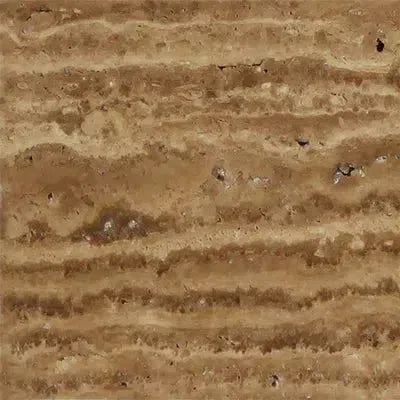 Exotic Noce Travertine
Exotic Noce Travertine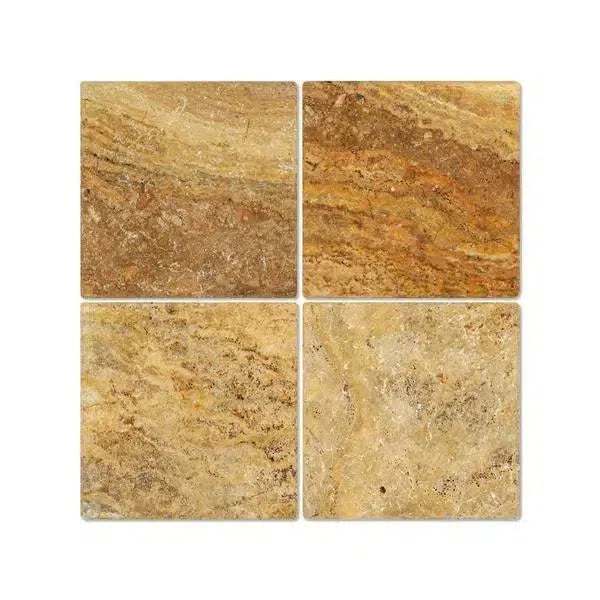 Scabos | Autumn Leaves Travertine
Scabos | Autumn Leaves Travertine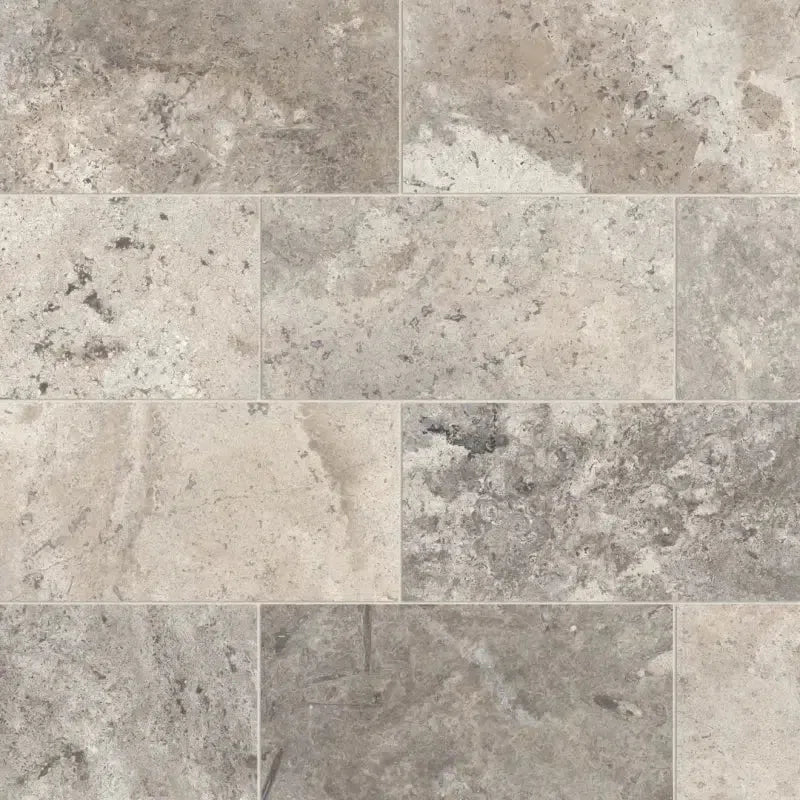 Silver Travertine
Silver Travertine Exotic Travertine
Exotic Travertine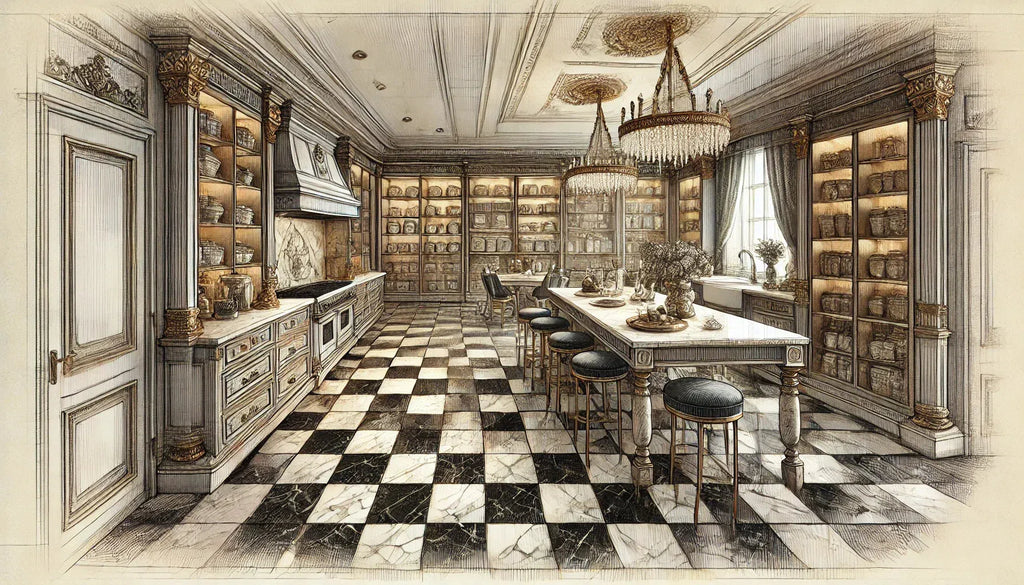 Checkerboard
Checkerboard
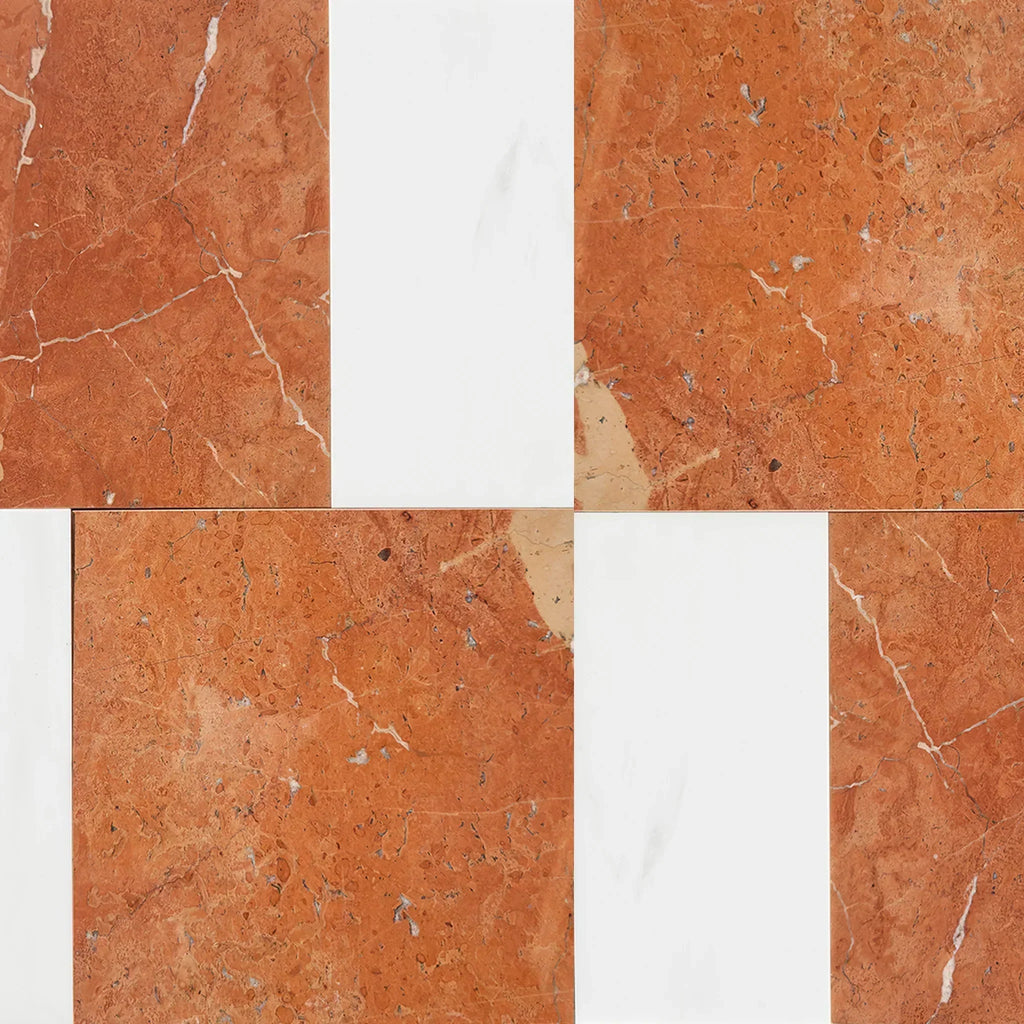 Patterned Tile
Patterned Tile
 Shop By Material
Shop By Material
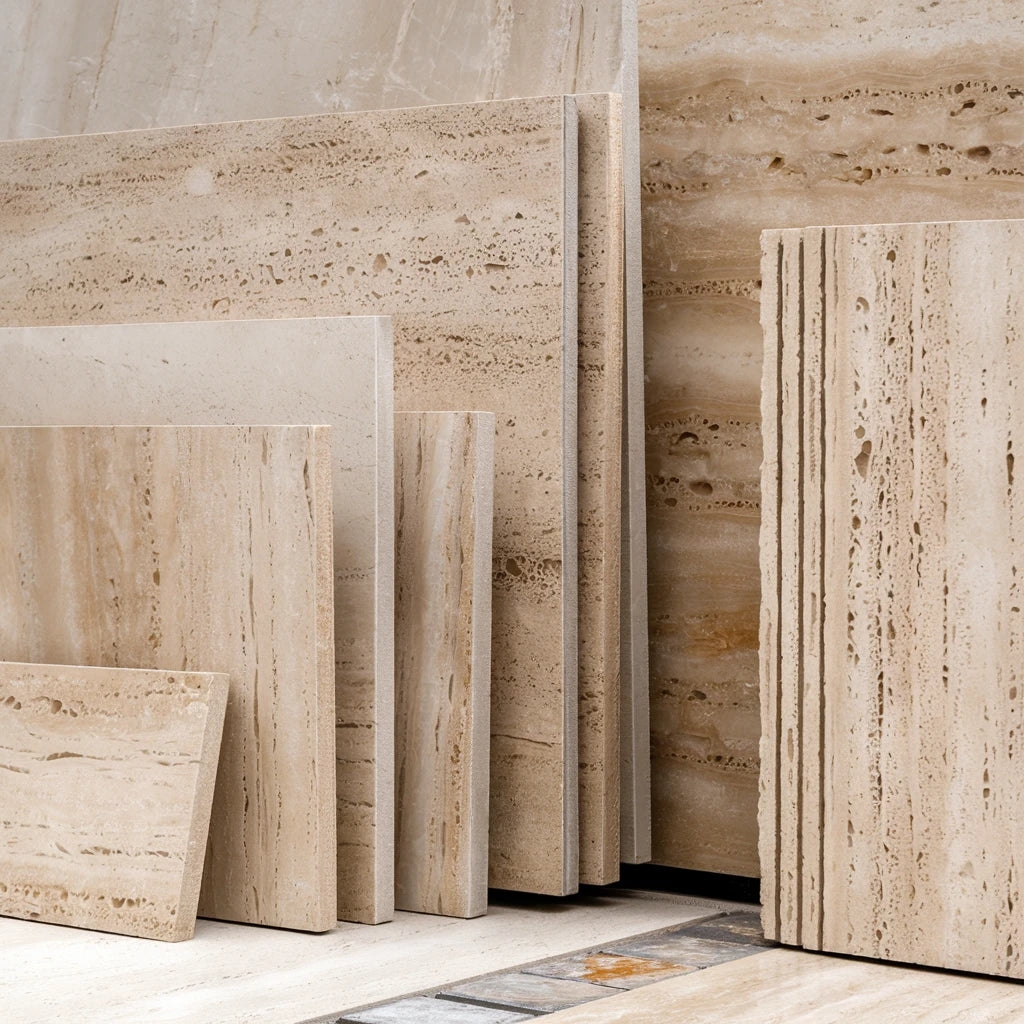 Travertine
Travertine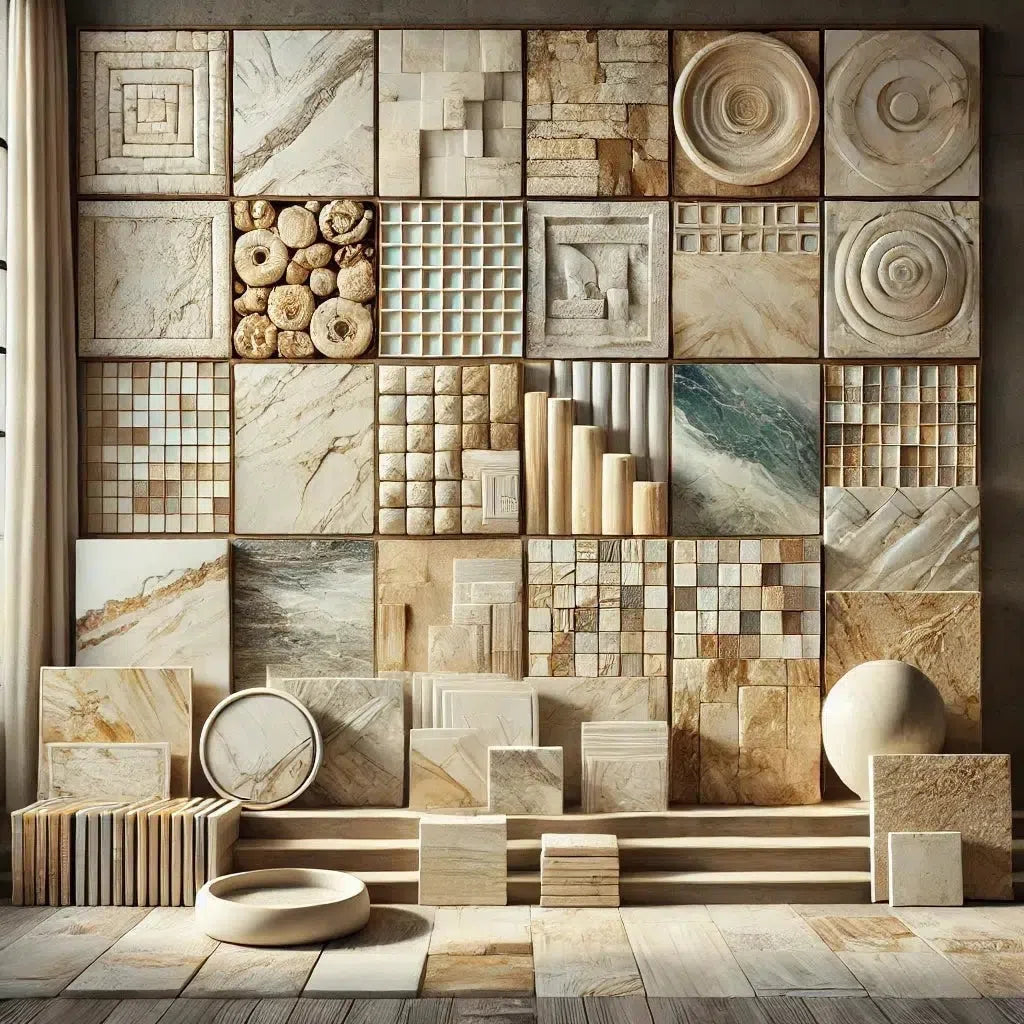 Marble
Marble Limestone
Limestone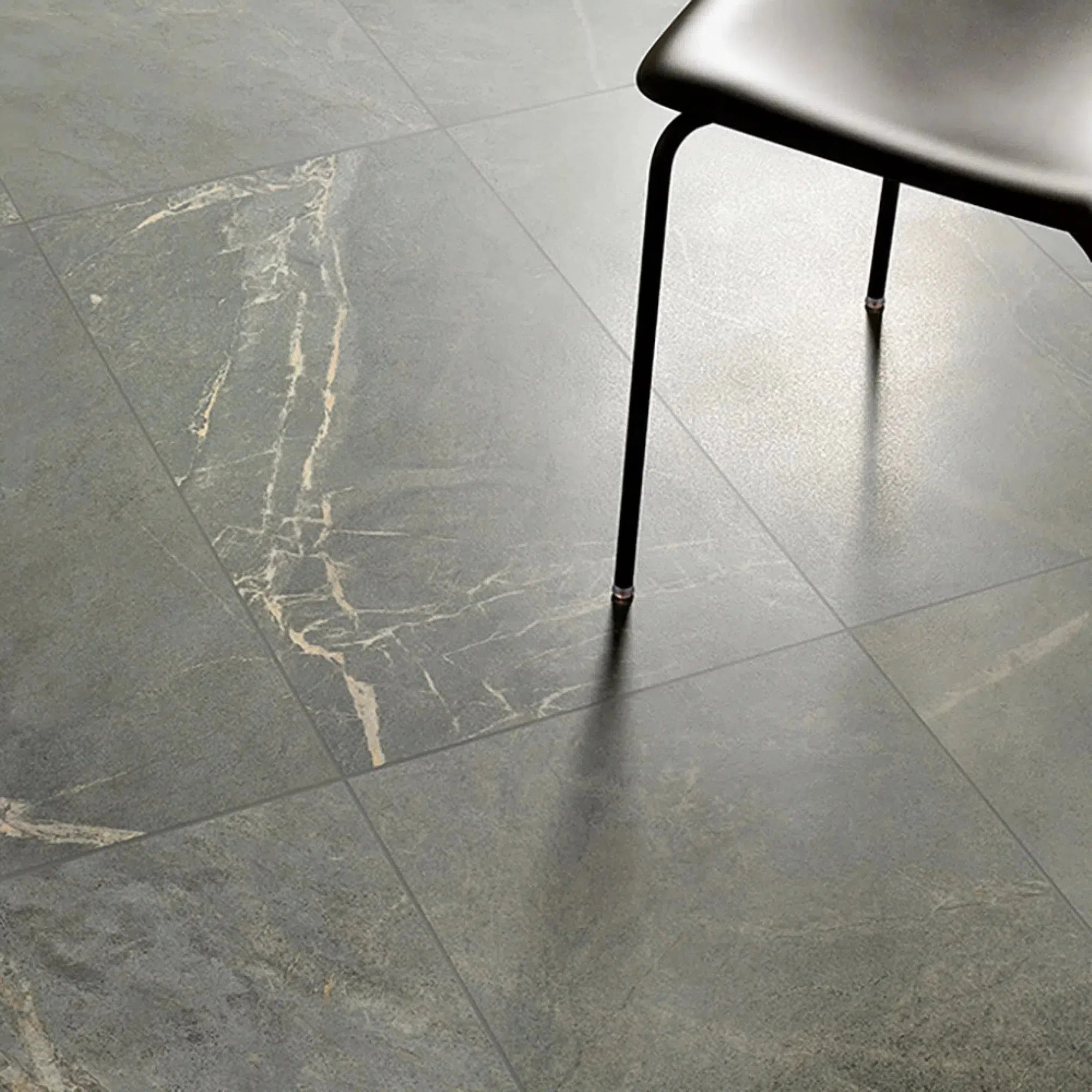 Soap Stone
Soap Stone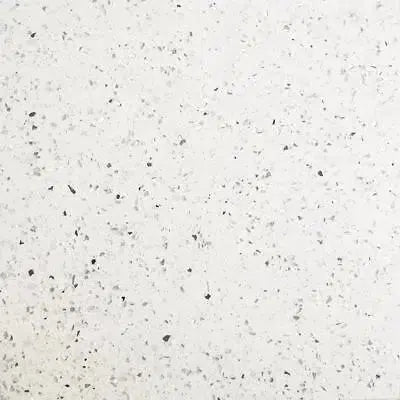 Quartz
Quartz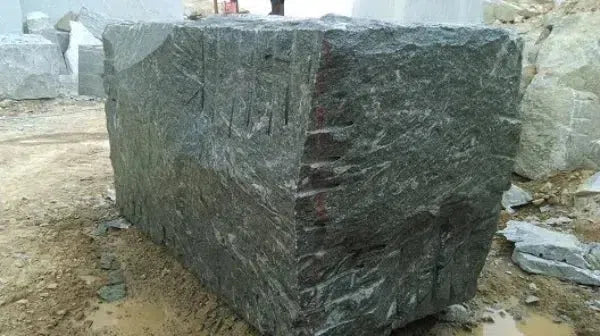 Granite
Granite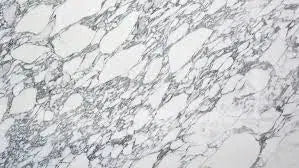 Shop By Name
Shop By Name
 Absolute Black Granite
Absolute Black Granite Atlantic Gray Marble
Atlantic Gray Marble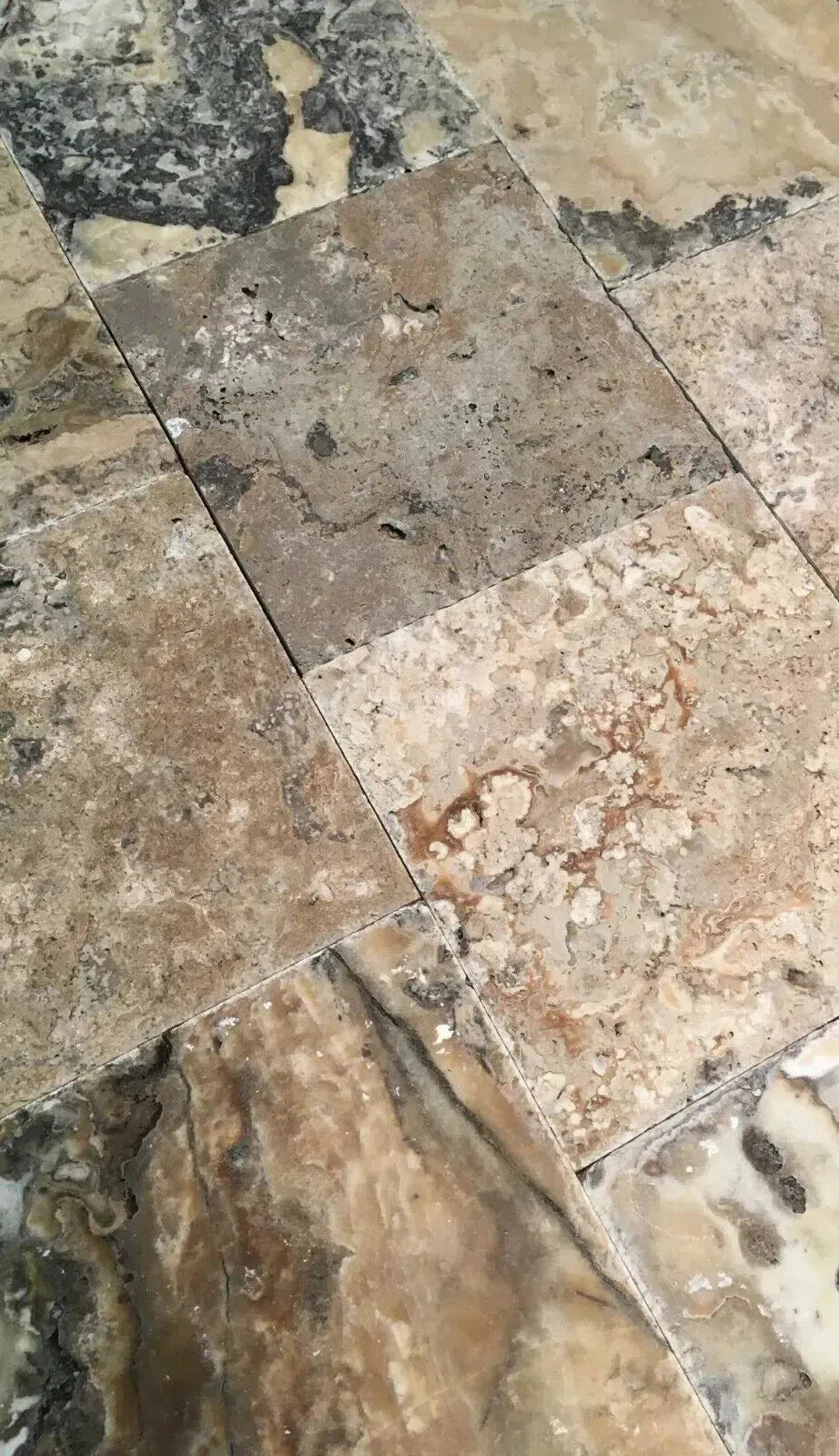 Antico Onyx Travertine
Antico Onyx Travertine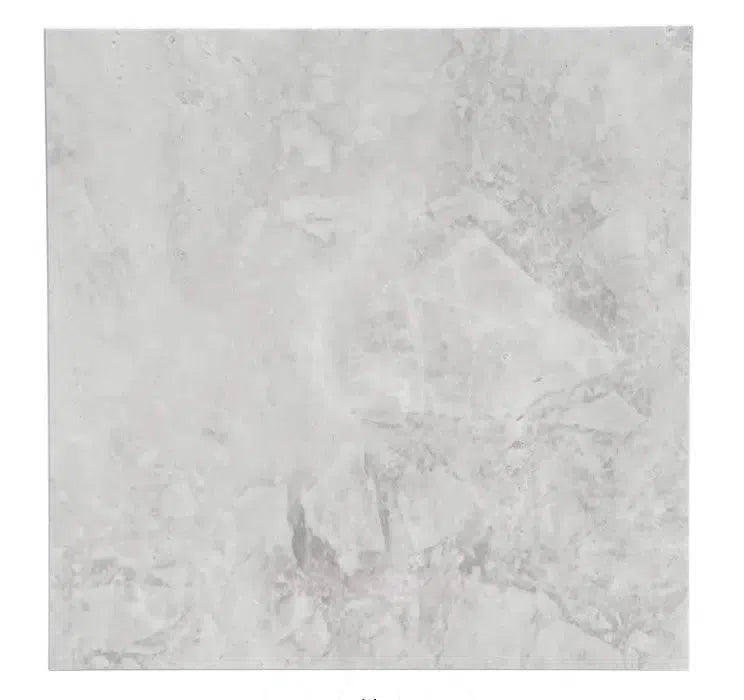 Bianco Congelato Dolomite
Bianco Congelato Dolomite Bianco Venatino (Bianco Mare) Marble
Bianco Venatino (Bianco Mare) Marble Calacatta Verde Royale Marble
Calacatta Verde Royale Marble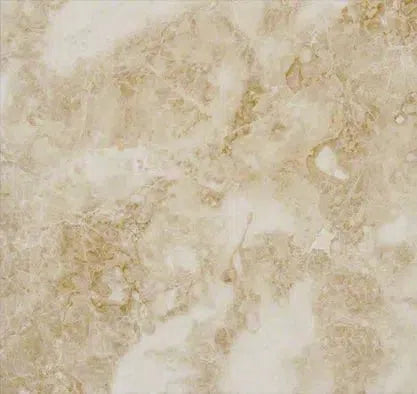 Cappuccino Marble
Cappuccino Marble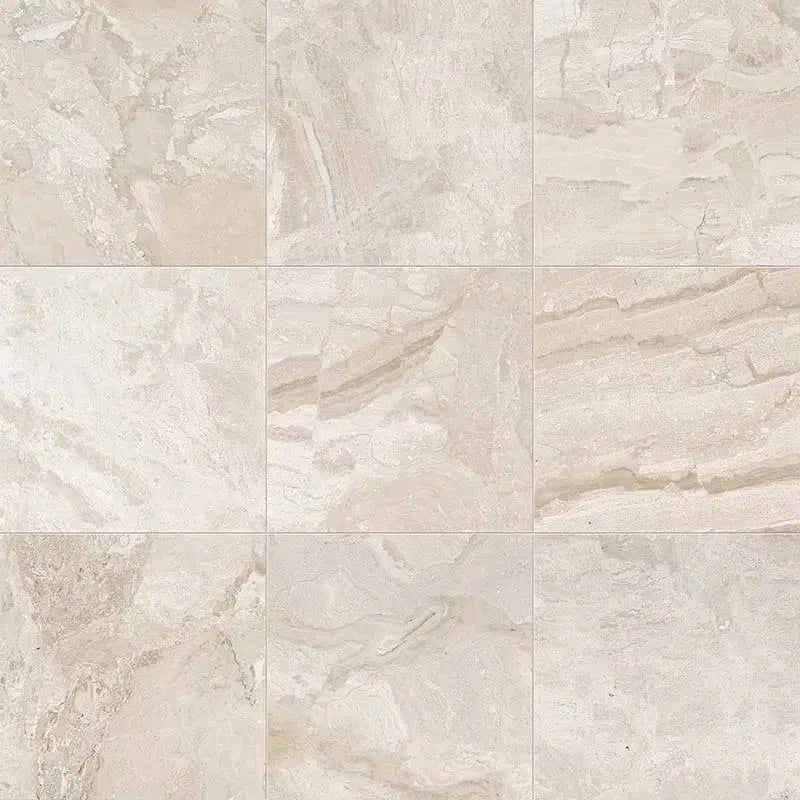 Diano Royal (Queen Beige) Marble
Diano Royal (Queen Beige) Marble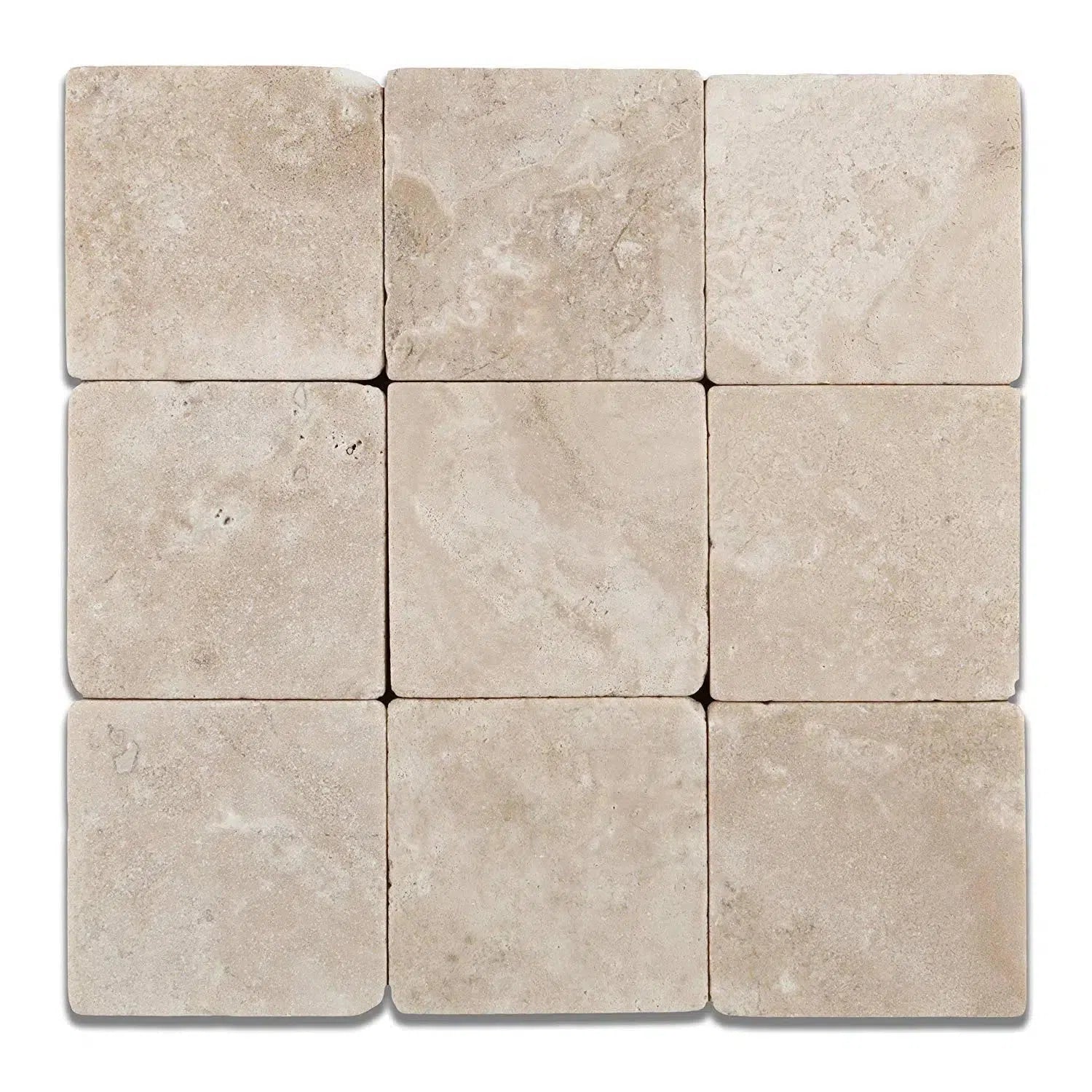 Durango Cream Traverine
Durango Cream Traverine Emperador Light Marble
Emperador Light Marble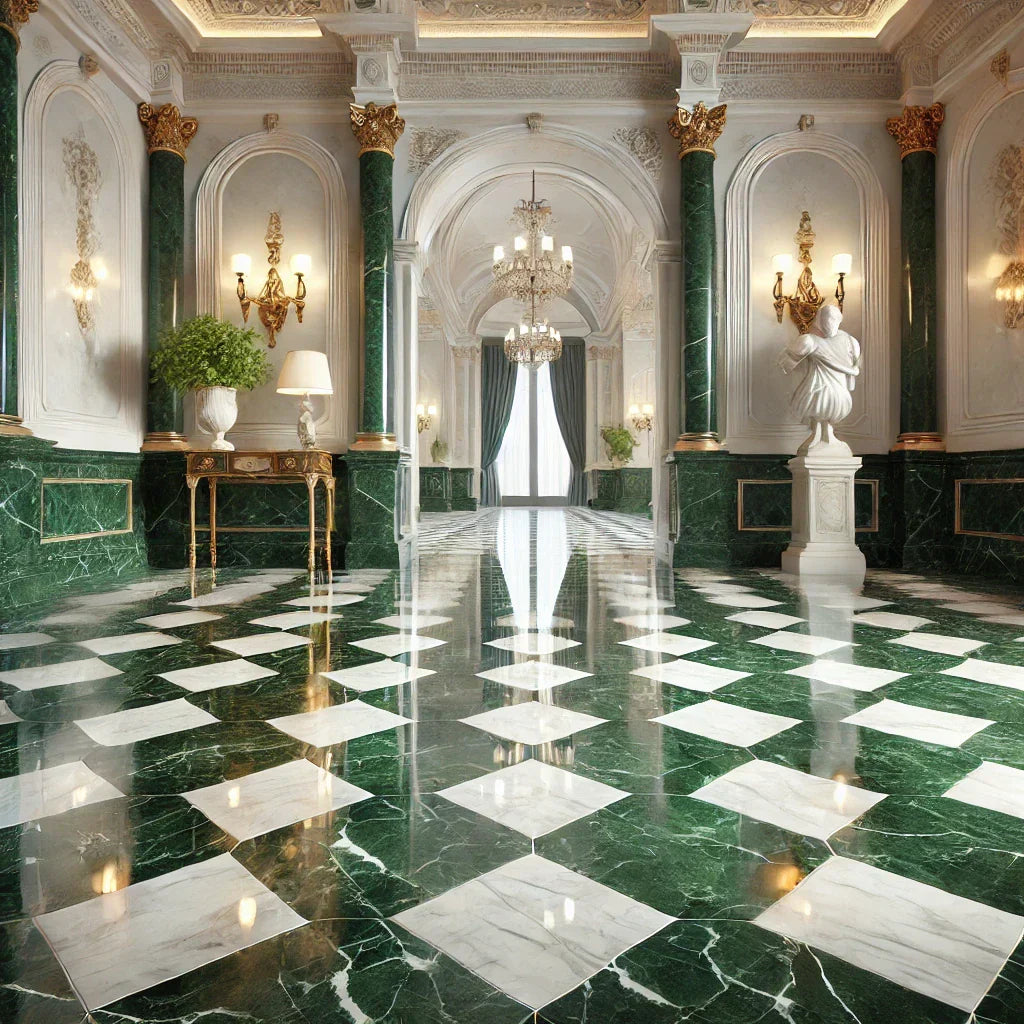 Empress Green Marble
Empress Green Marble Gold/Yellow Travertine
Gold/Yellow Travertine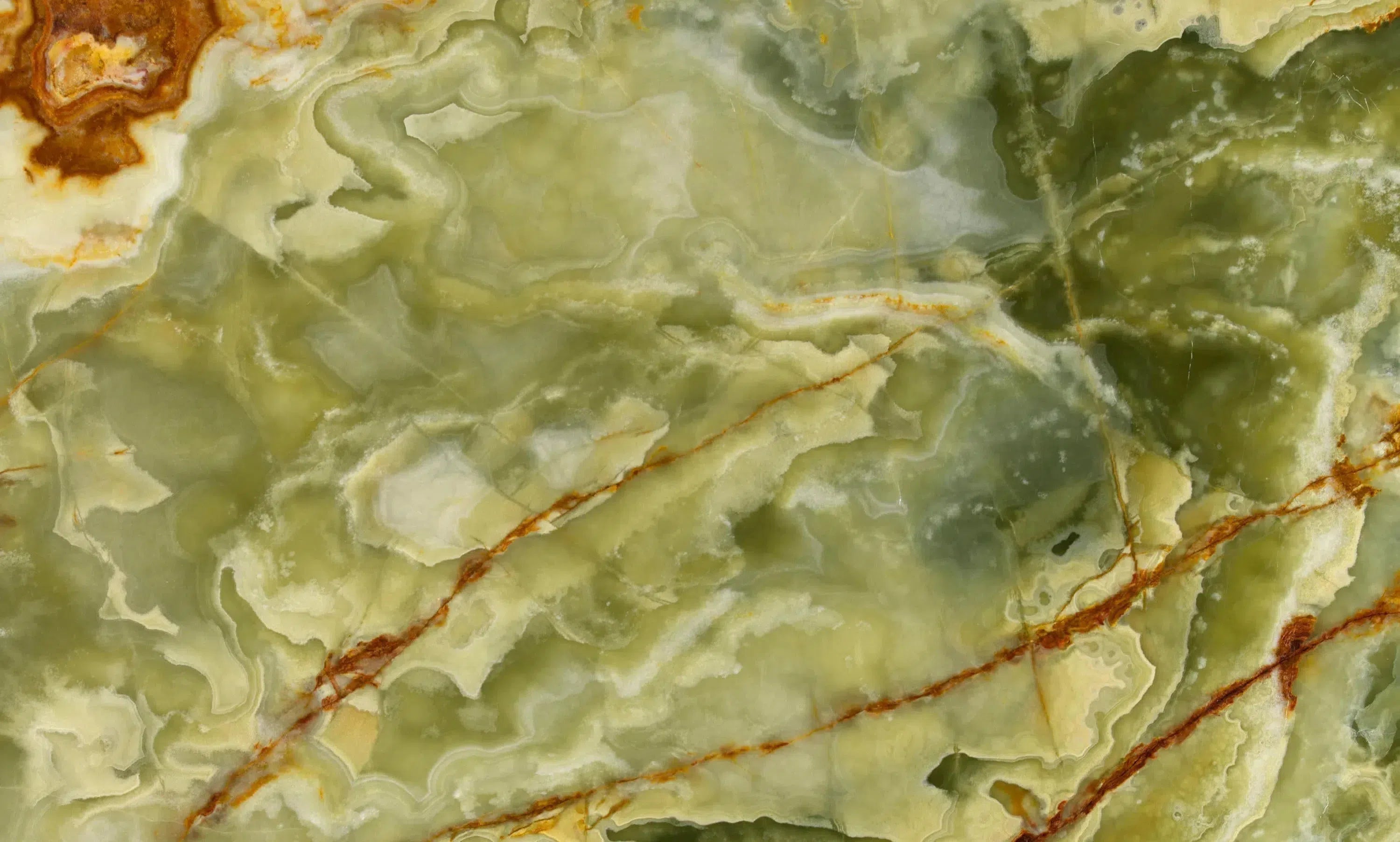 Green Onyx Marble
Green Onyx Marble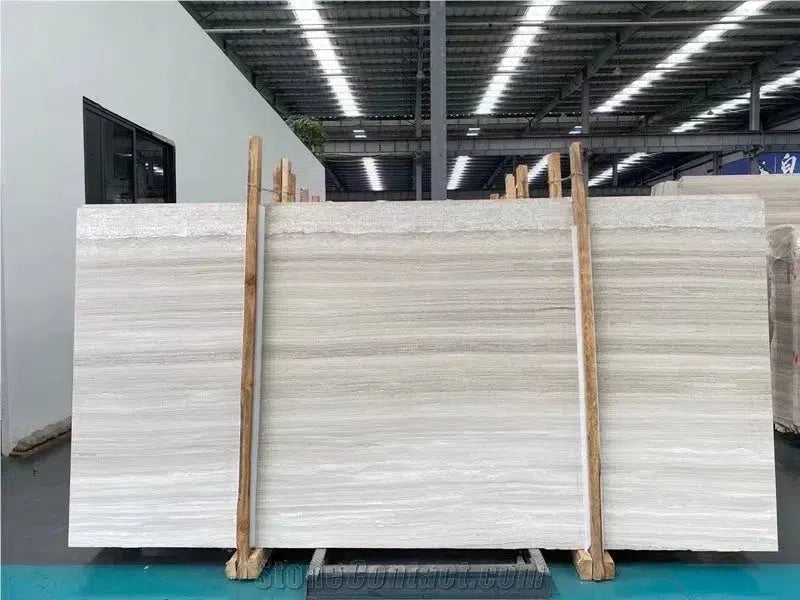 Haisa Light (White Wood) Limestone
Haisa Light (White Wood) Limestone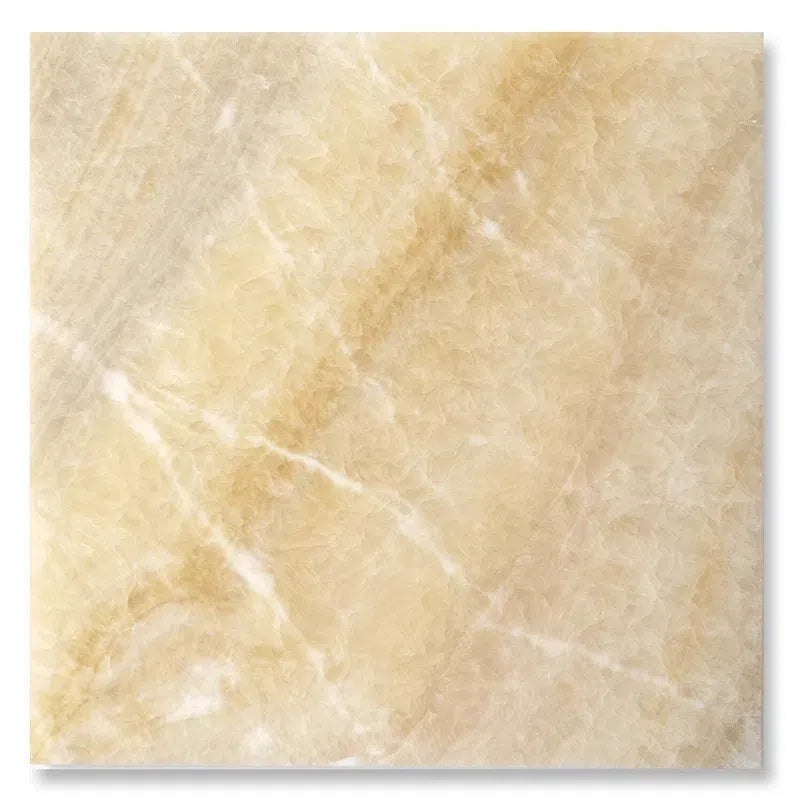 Honey Onyx Marble
Honey Onyx Marble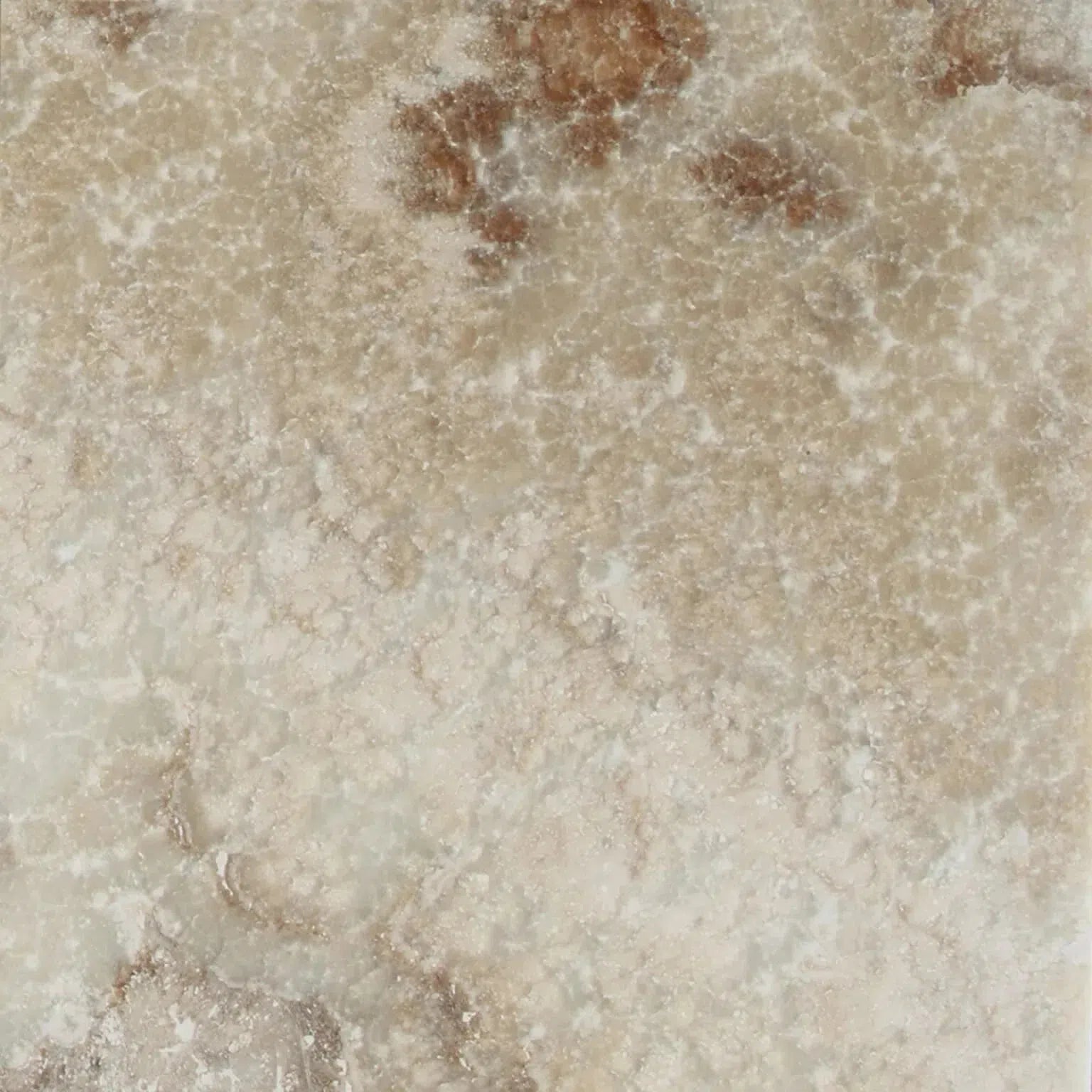 La Travonya Travertine
La Travonya Travertine Malibu Travertine
Malibu Travertine Mink (Equator) Marble
Mink (Equator) Marble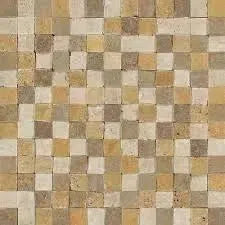 Mixed (Ivory-Noce-Gold) Travertine
Mixed (Ivory-Noce-Gold) Travertine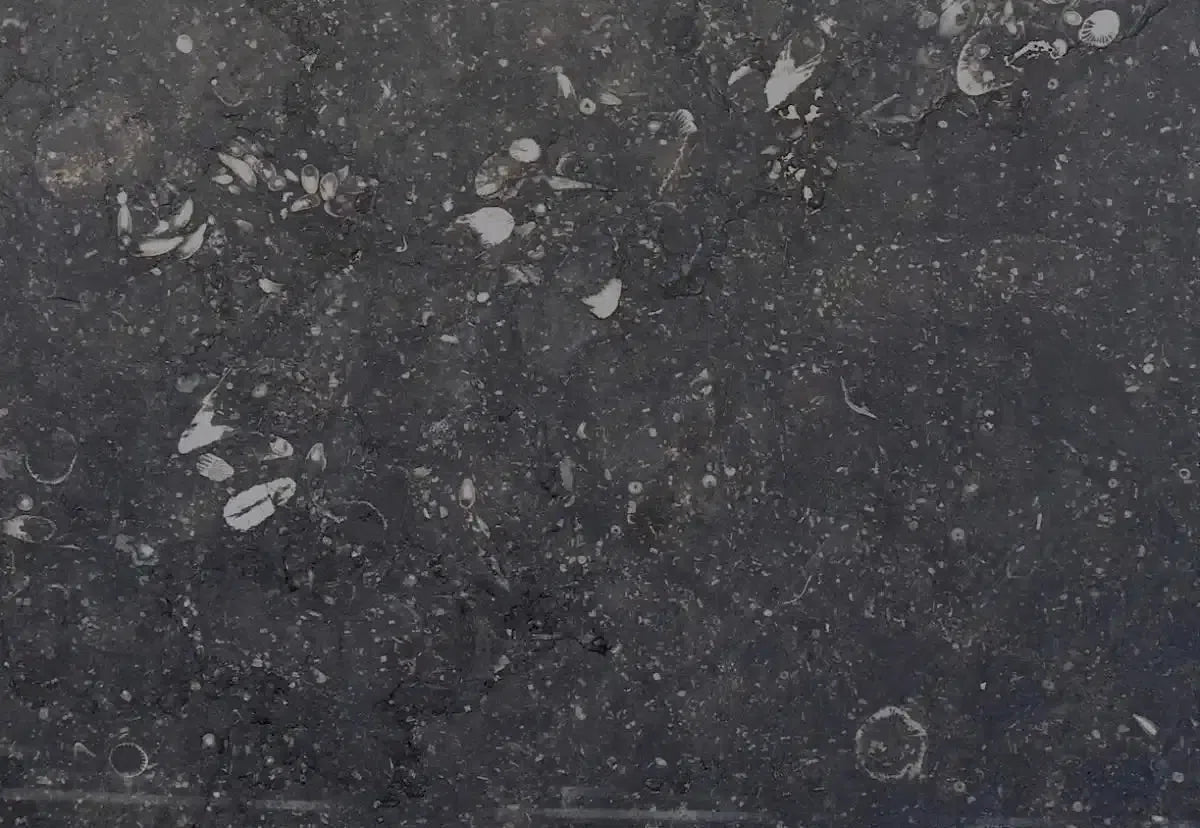 Pierre Bleue (Pierre Blue) Marble
Pierre Bleue (Pierre Blue) Marble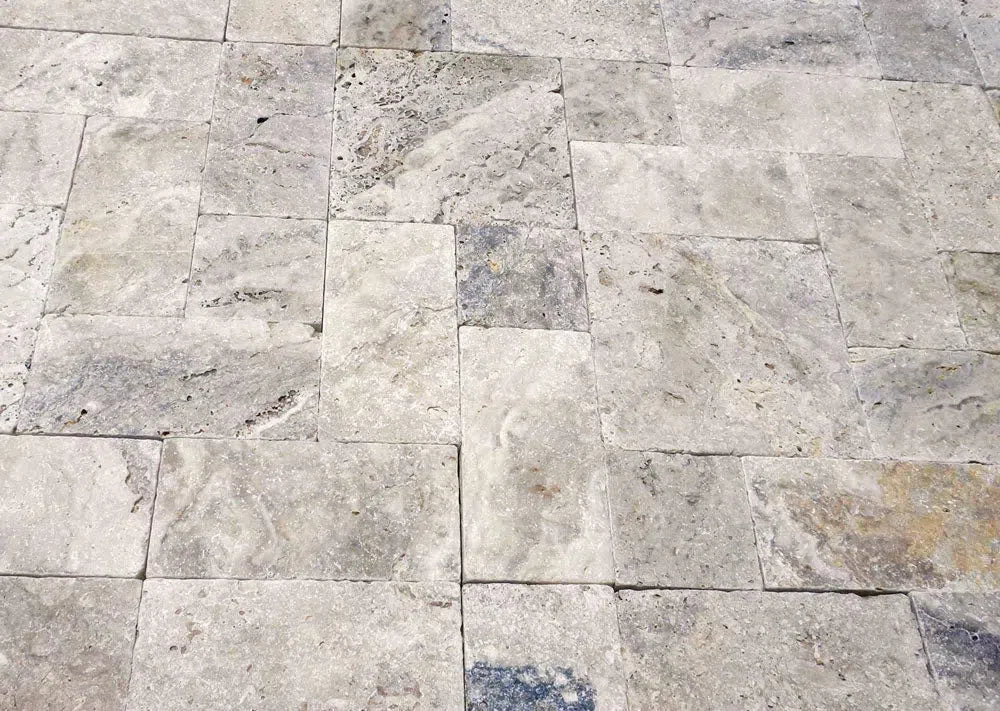 Philadelphia Travertine
Philadelphia Travertine Rosé Aurora Marble
Rosé Aurora Marble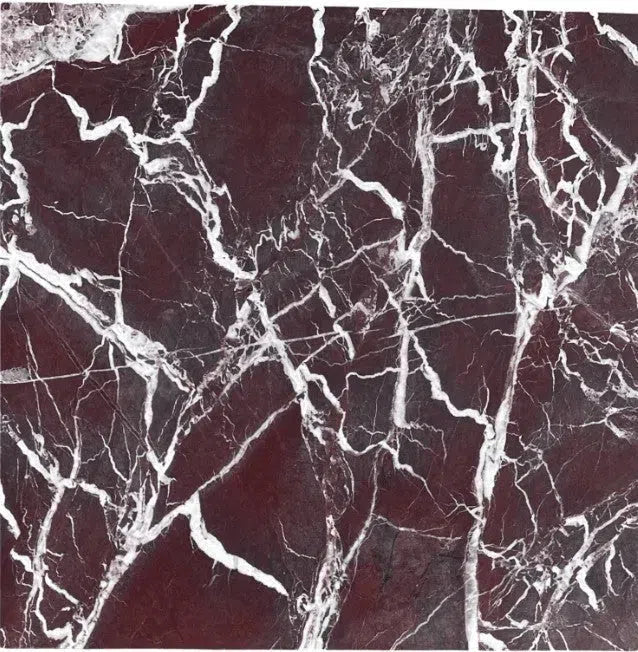 Rosso Levanto Marble
Rosso Levanto Marble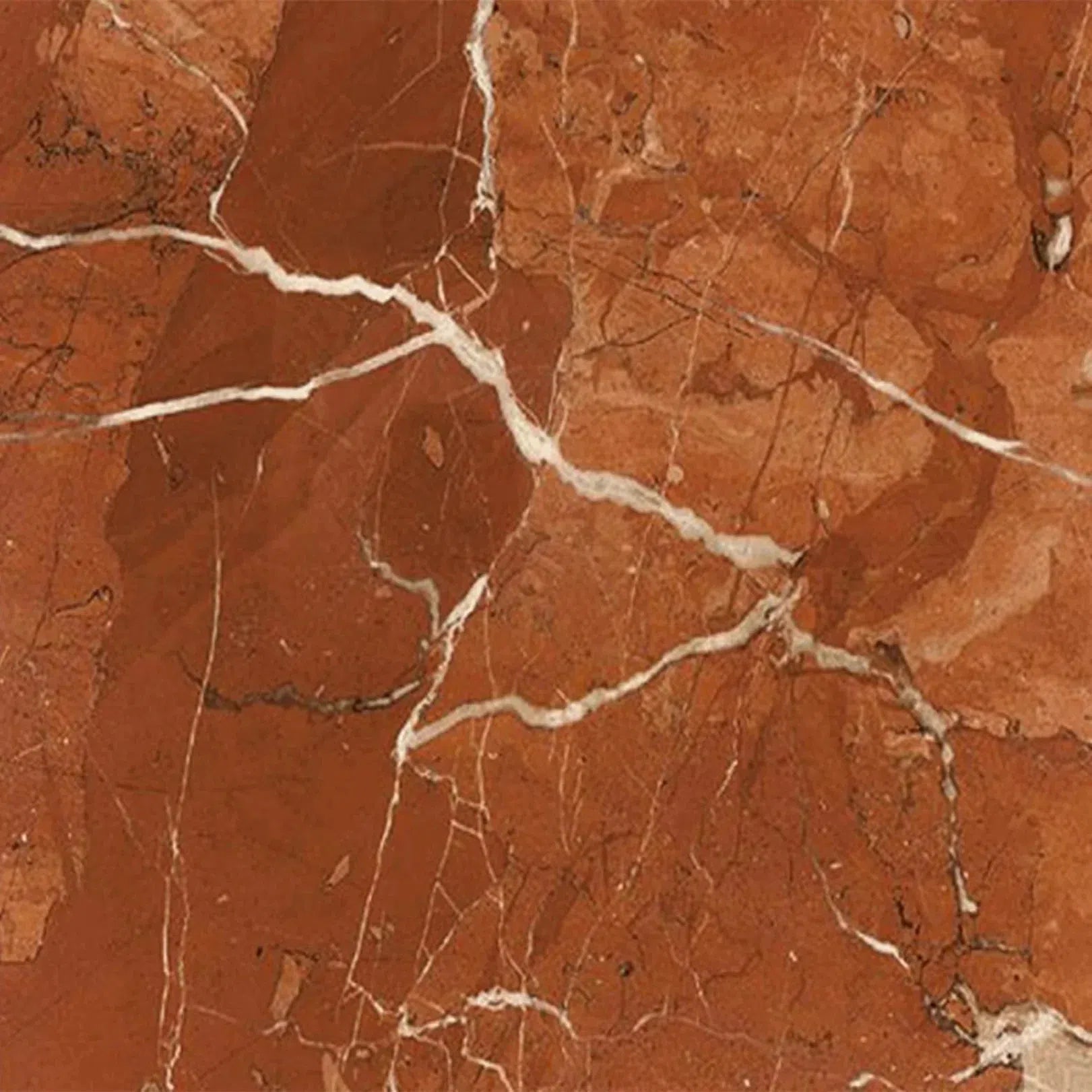 Rojo Alicante Marble
Rojo Alicante Marble Sky Blue | Azul Cielo Marble
Sky Blue | Azul Cielo Marble Snow White (Afyon White) Marble
Snow White (Afyon White) Marble Spanish Mix Marble
Spanish Mix Marble Storm Gray Marble
Storm Gray Marble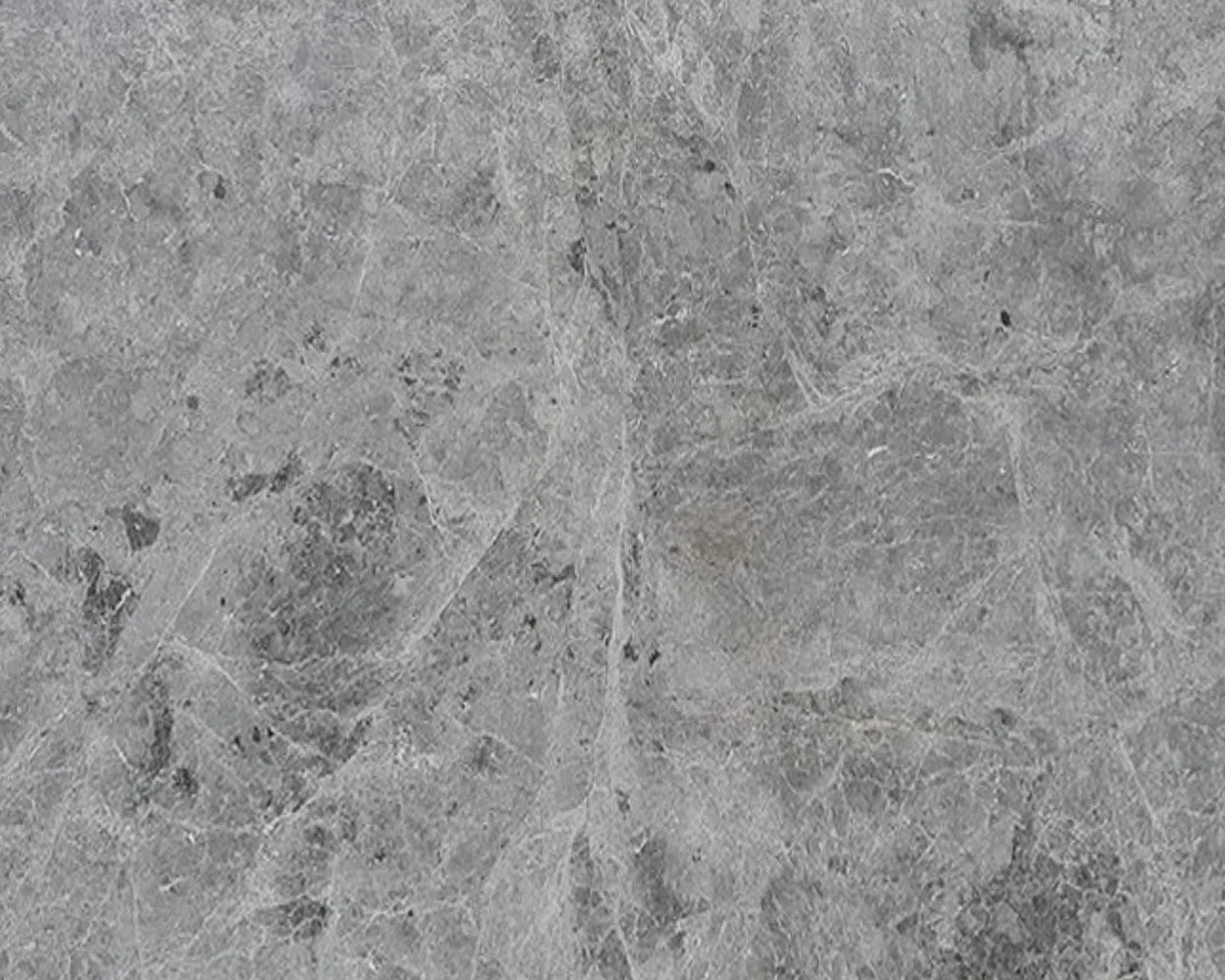 Tundra Gray (Atlantic Gray) Marble
Tundra Gray (Atlantic Gray) Marble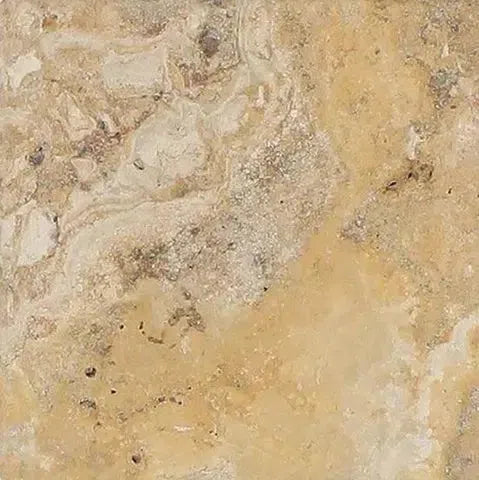 Valencia Travertine
Valencia Travertine Valerenga Travertine
Valerenga Travertine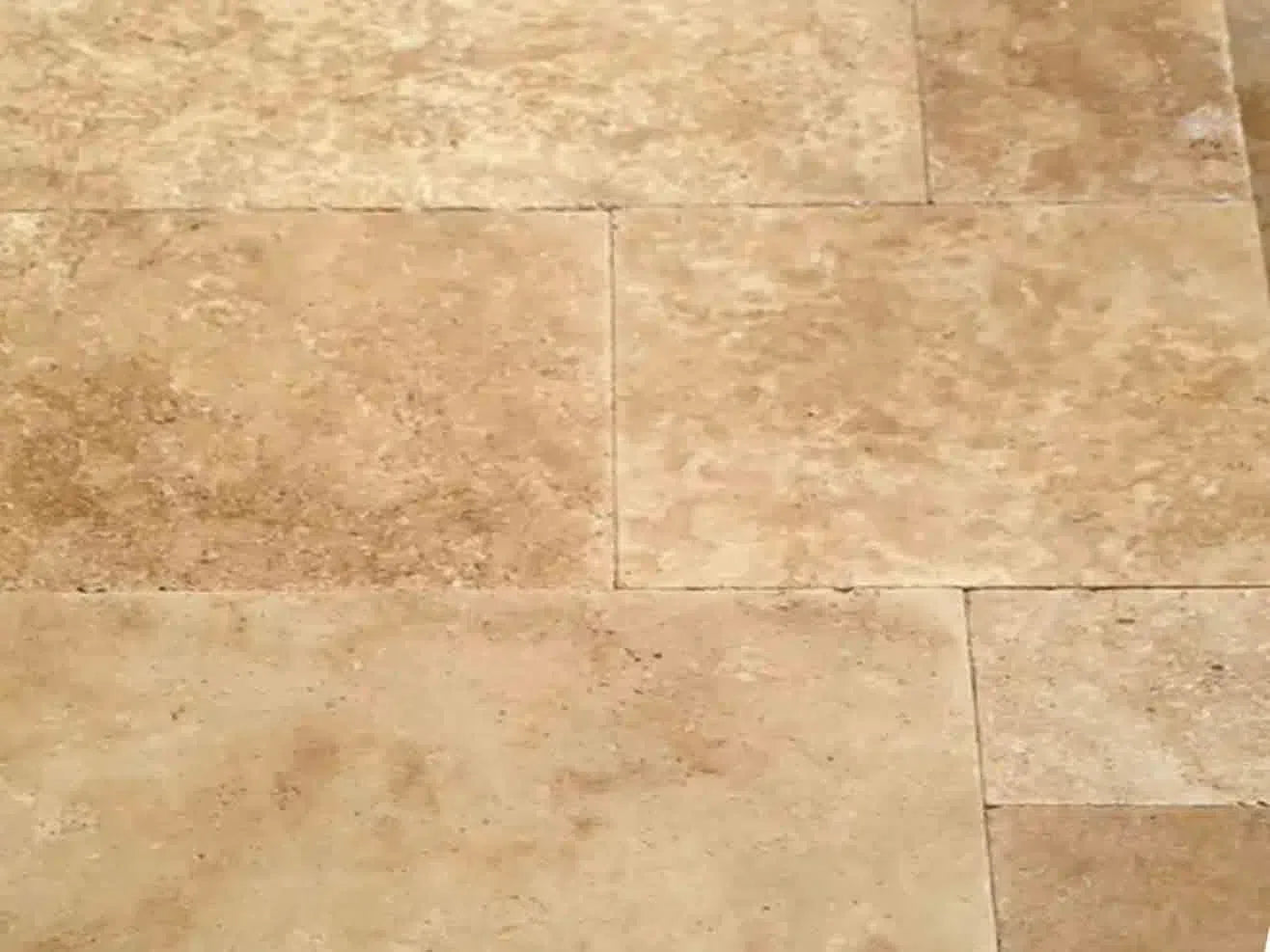 Walnut Travertine
Walnut Travertine White Onyx Marble
White Onyx Marble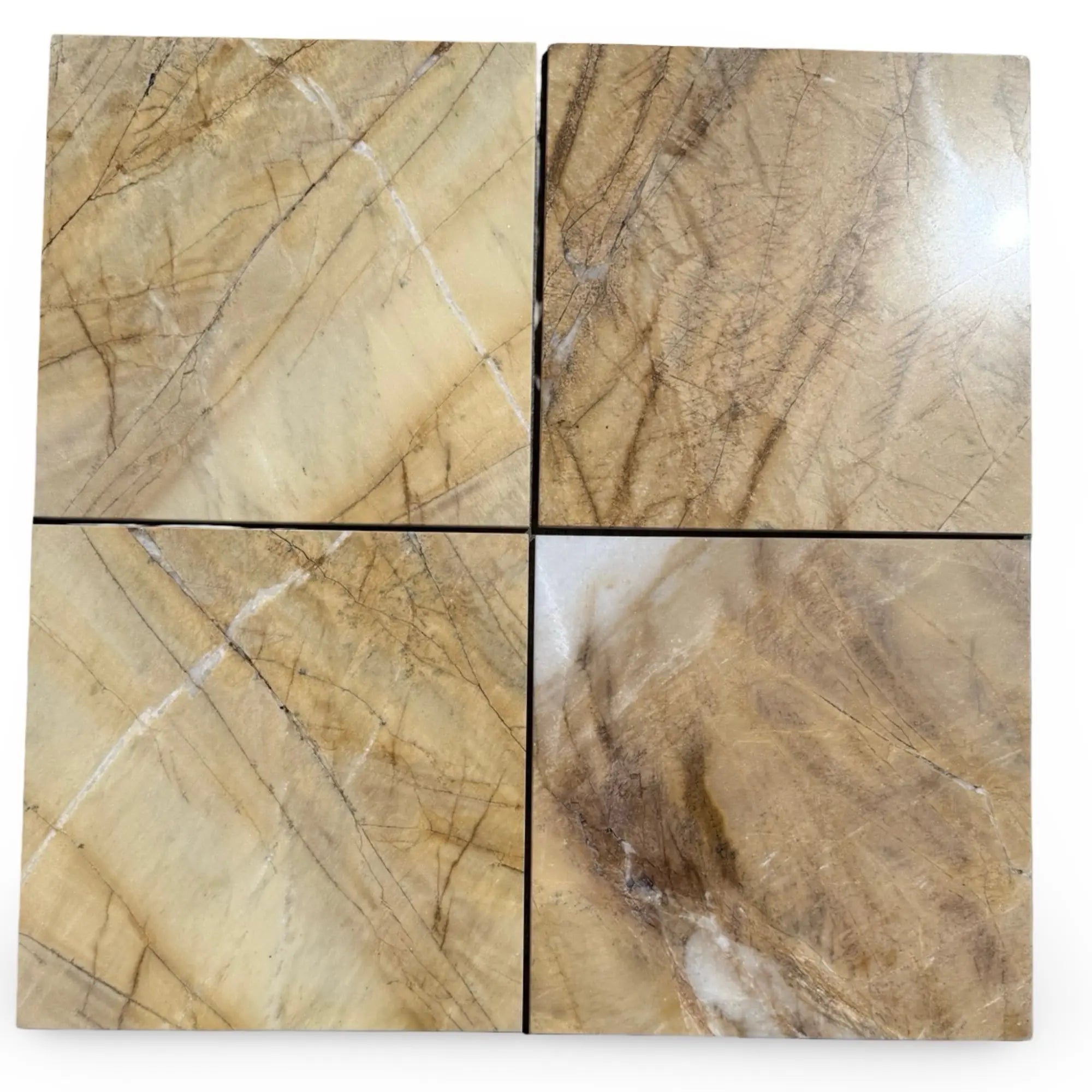 Golden Horizon Marble
Golden Horizon Marble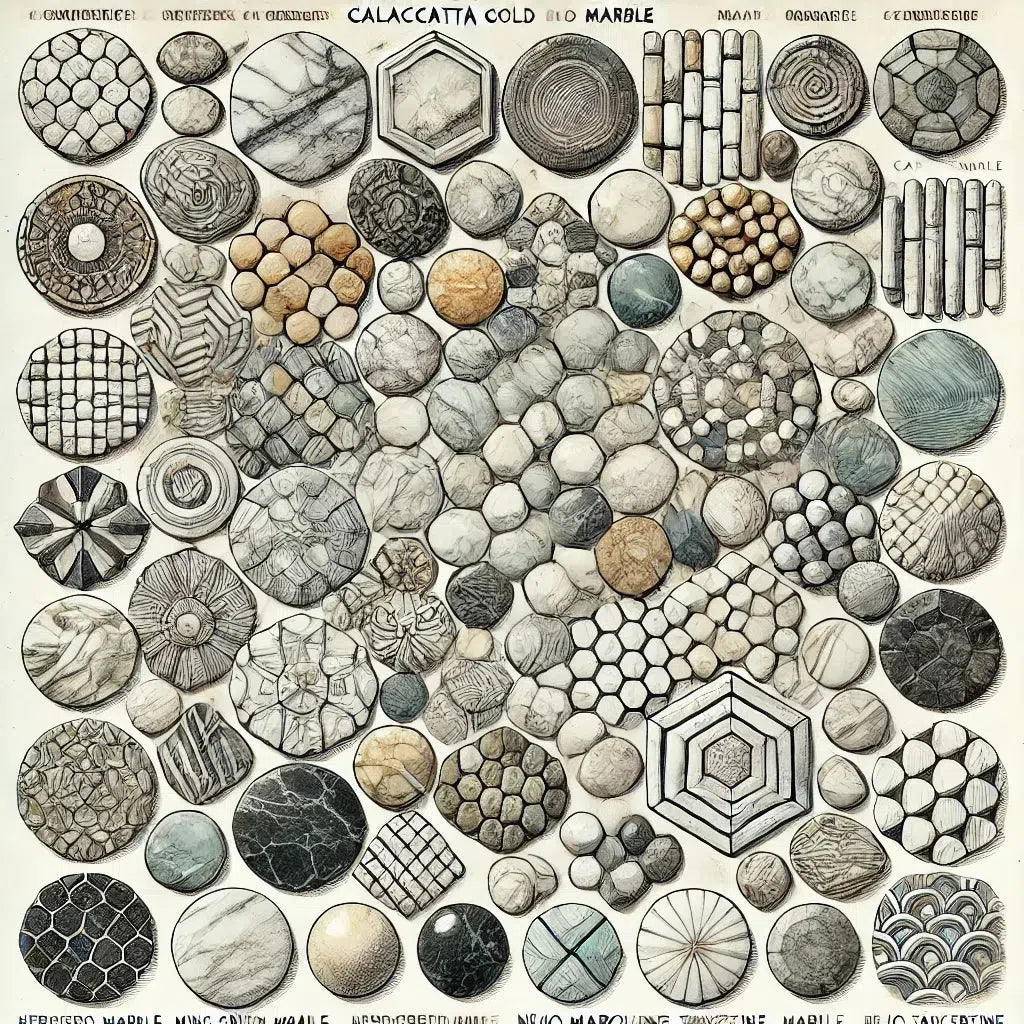 Shop By Type
Shop By Type
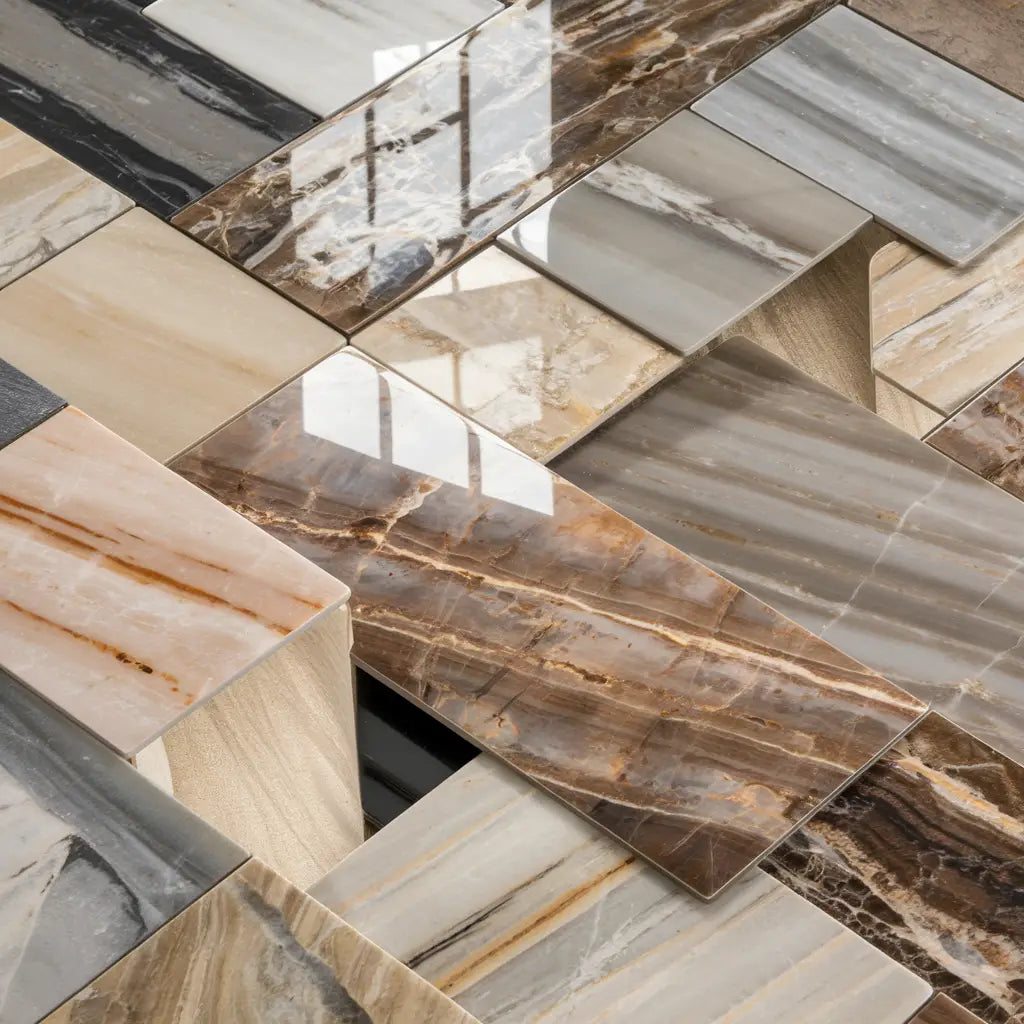 Marble Tiles
Marble Tiles Marble Mosaic
Marble Mosaic Travertine Tiles
Travertine Tiles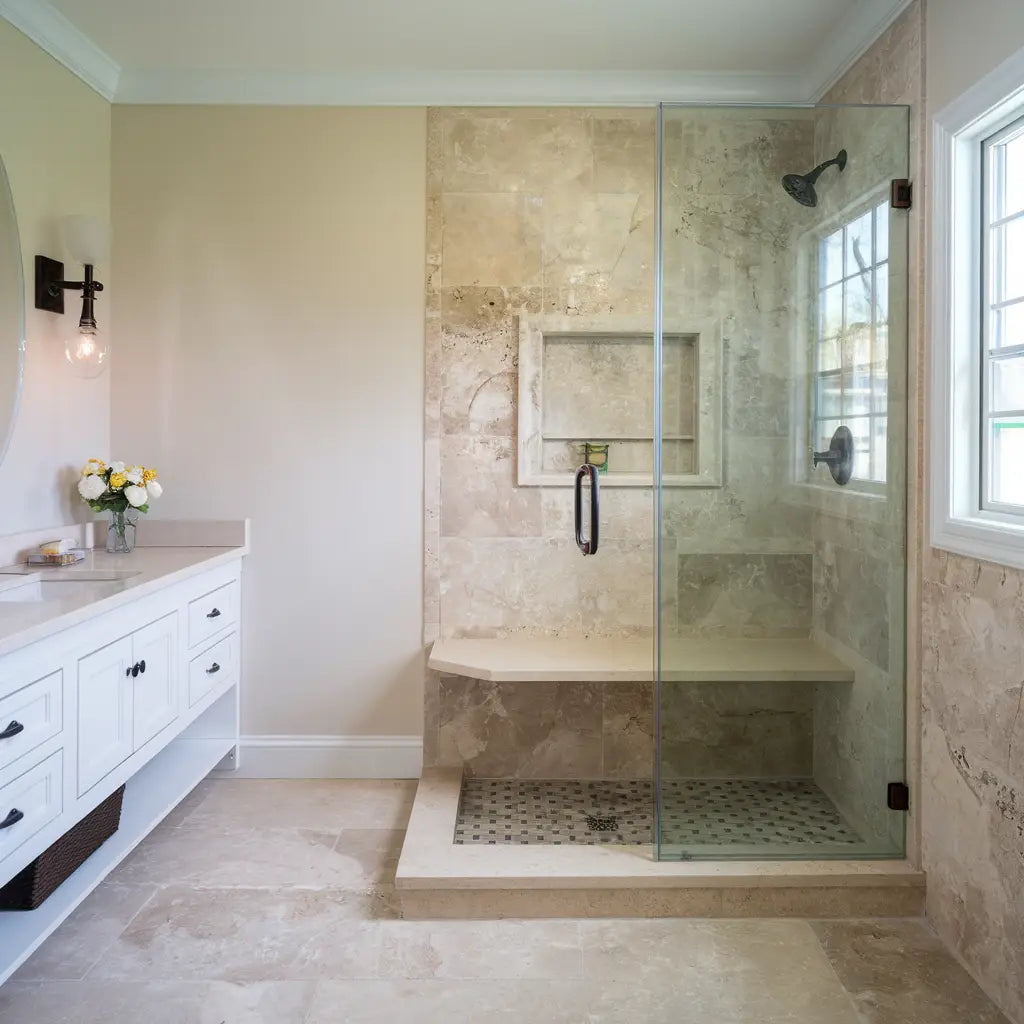 Travertine Mosaic
Travertine Mosaic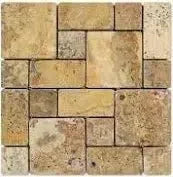 4 pcs Versailles Pattern / French Pattern Set
4 pcs Versailles Pattern / French Pattern Set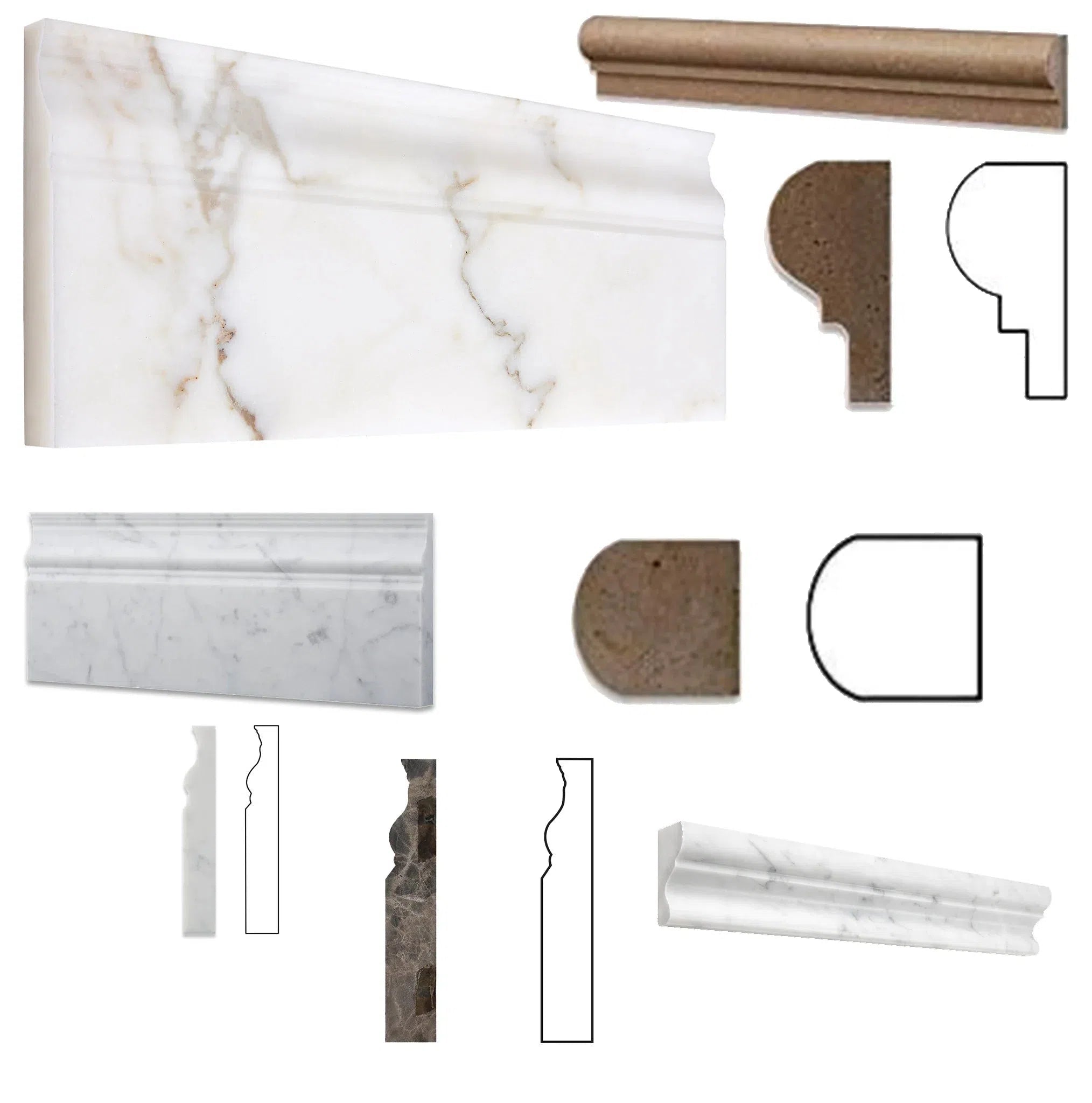 Molding/Trim
Molding/Trim Border/Listello
Border/Listello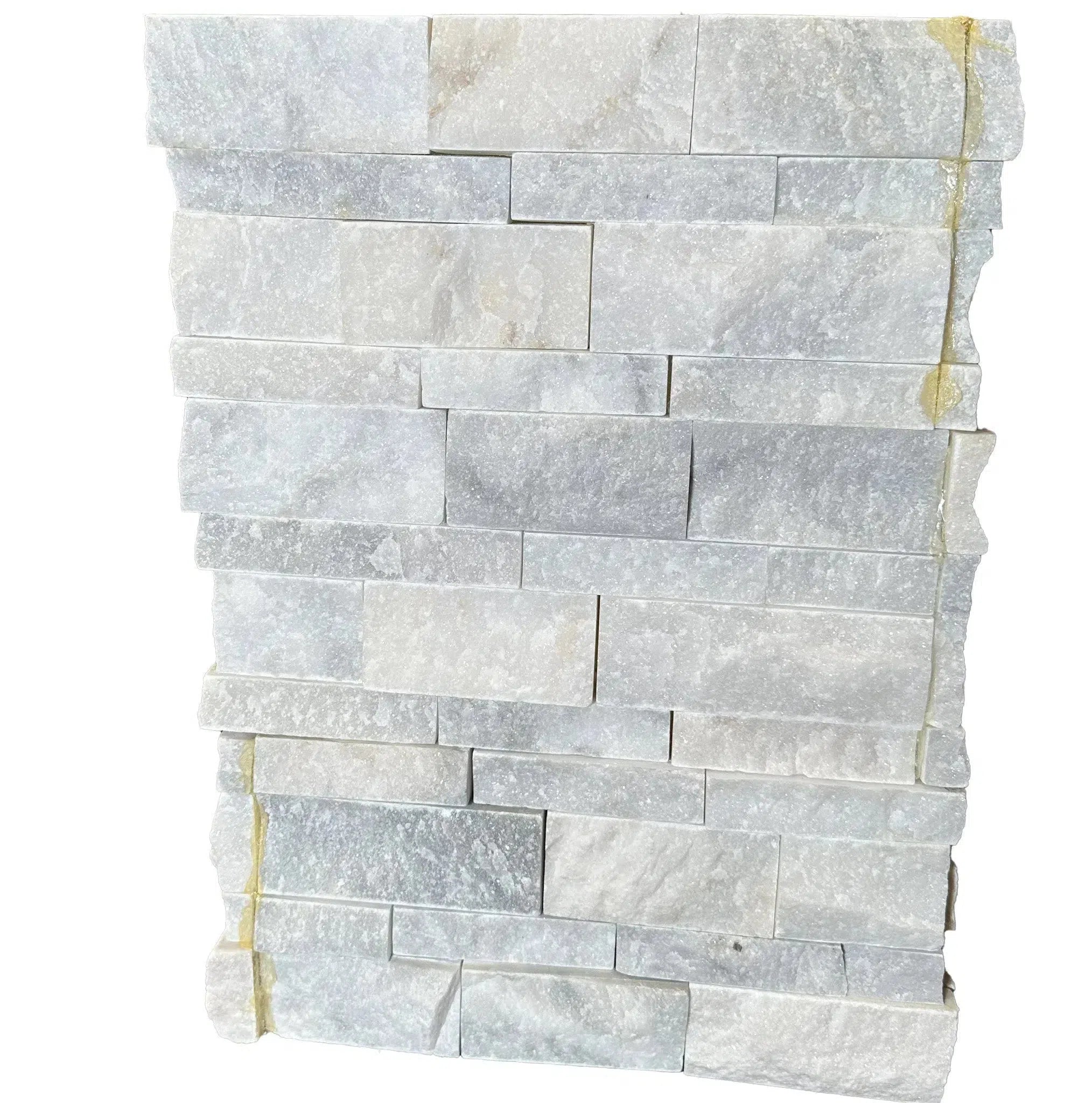 Ledger-Panel
Ledger-Panel Checkerboard
Checkerboard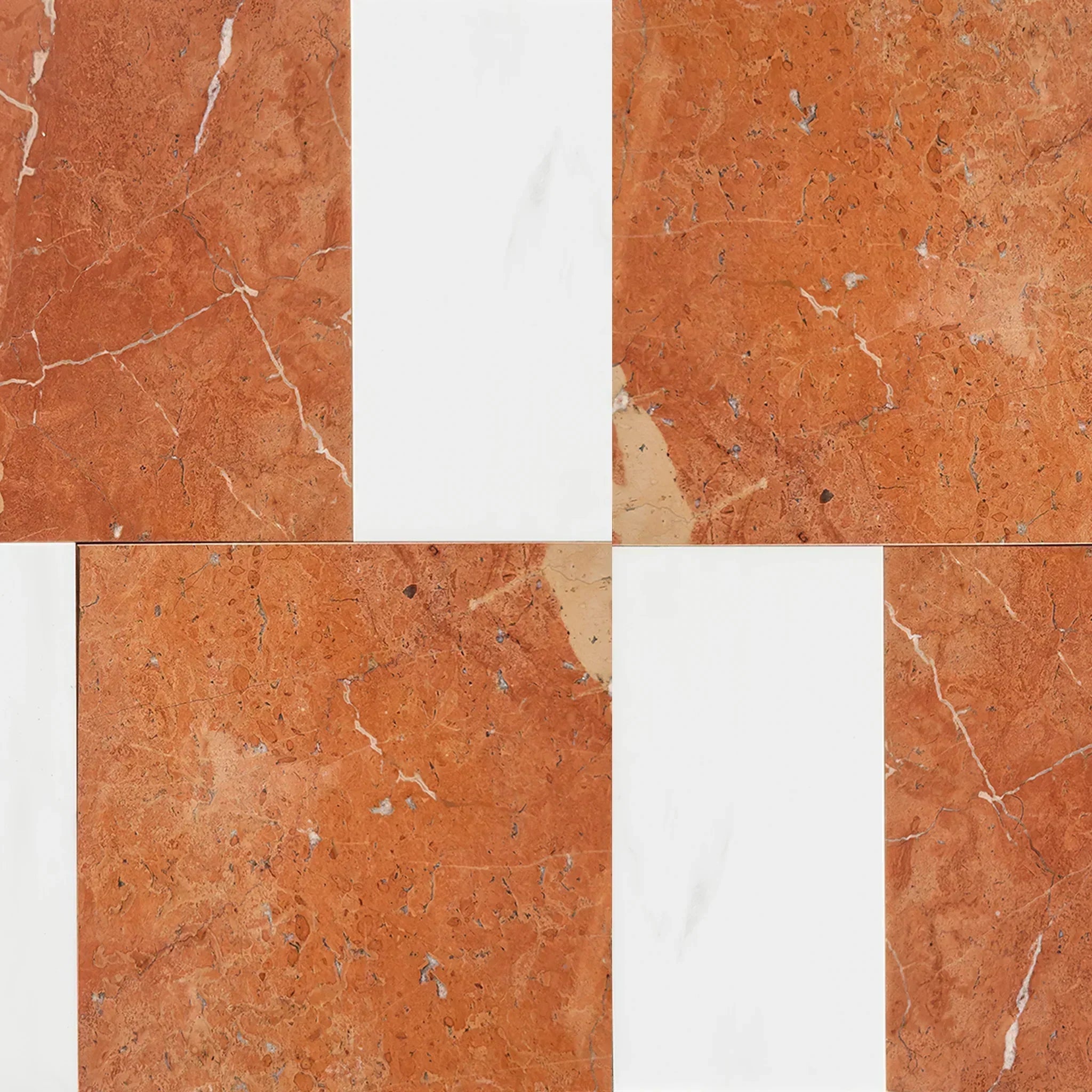 Patterned Tile Collection
Patterned Tile Collection  Shop By Finish
Shop By Finish
 Polished
Polished Honed
Honed Brushed
Brushed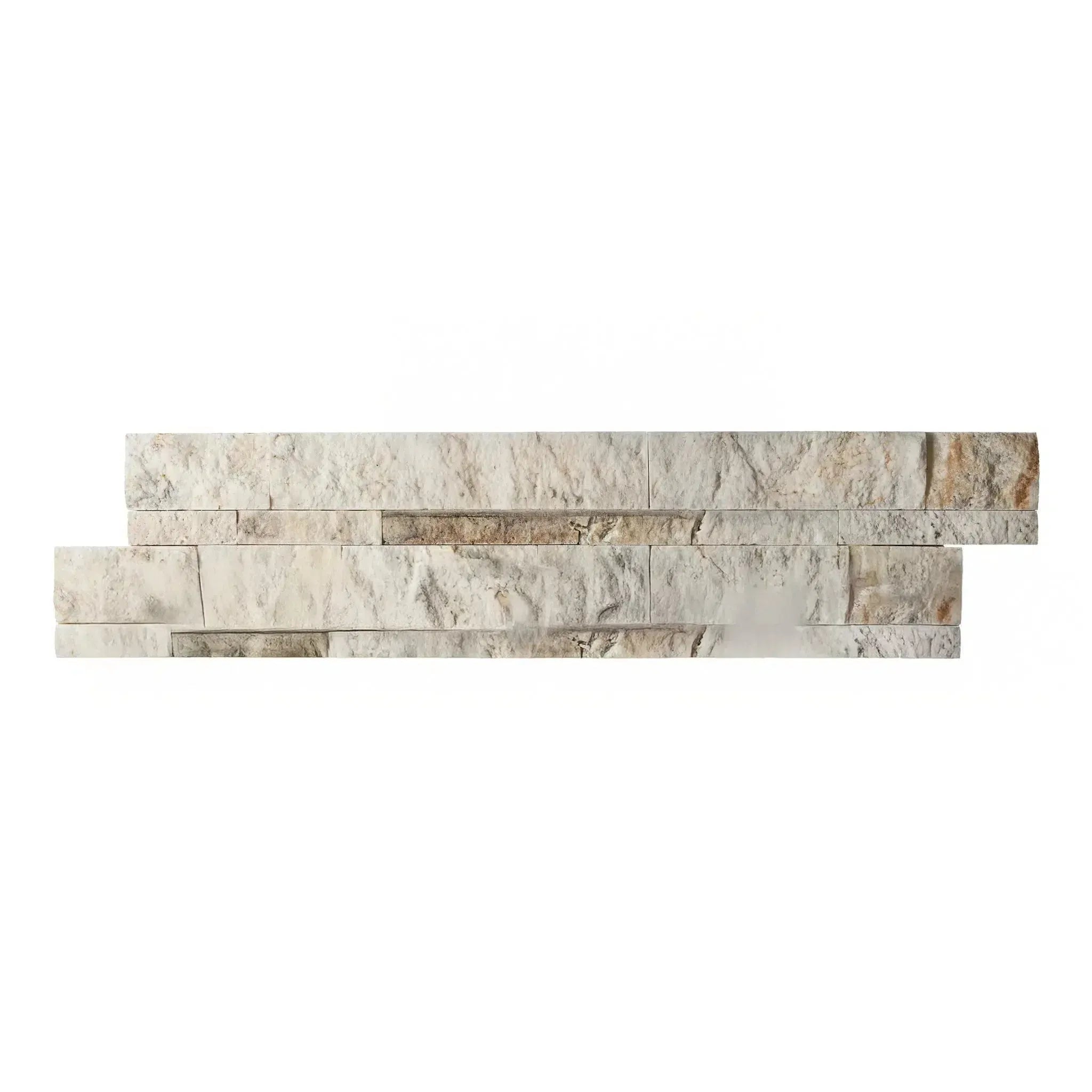 Split Face
Split Face Textured
Textured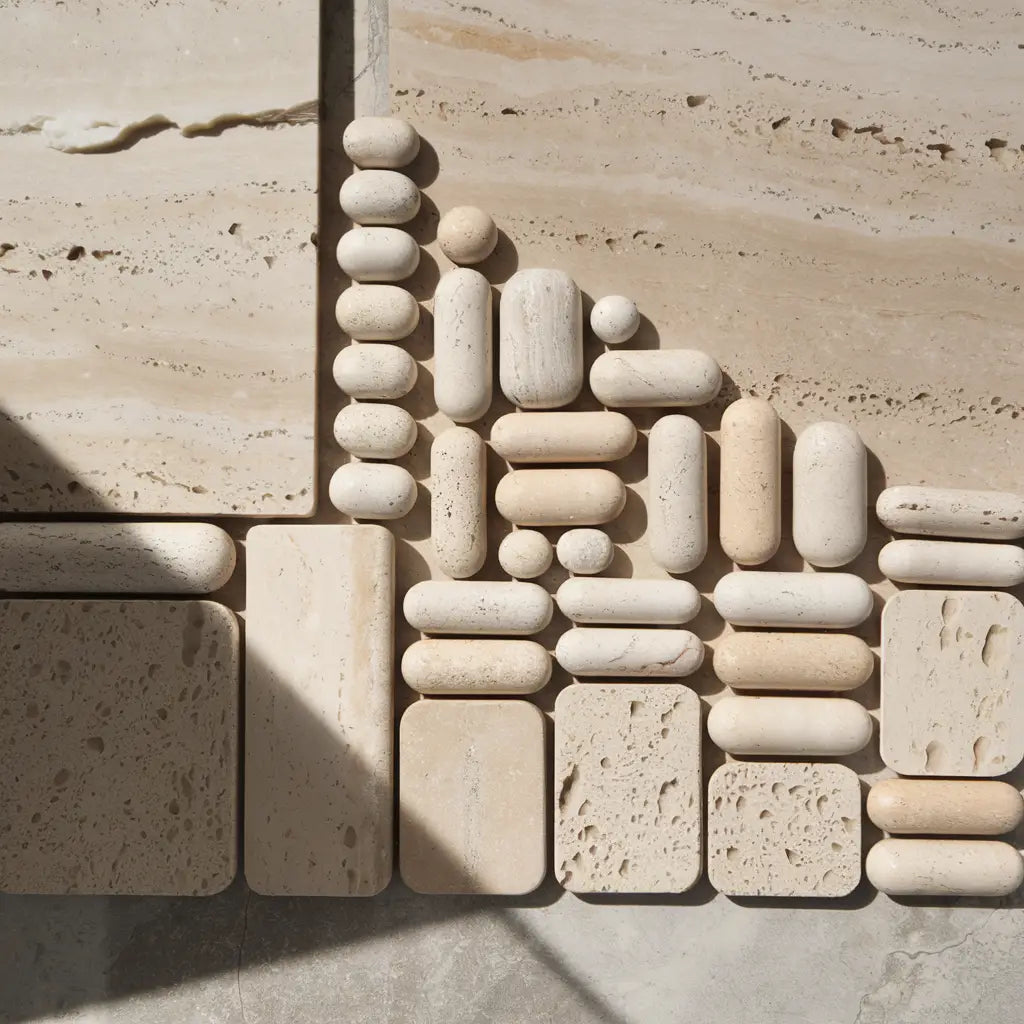 Tumbled
Tumbled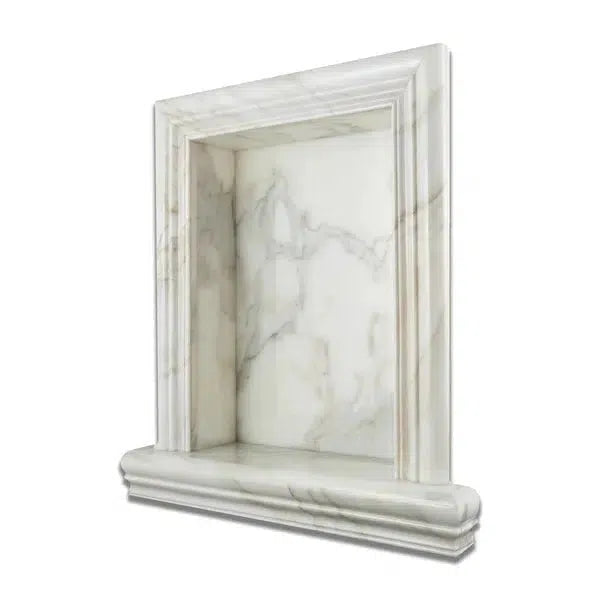 Accessories
Accessories
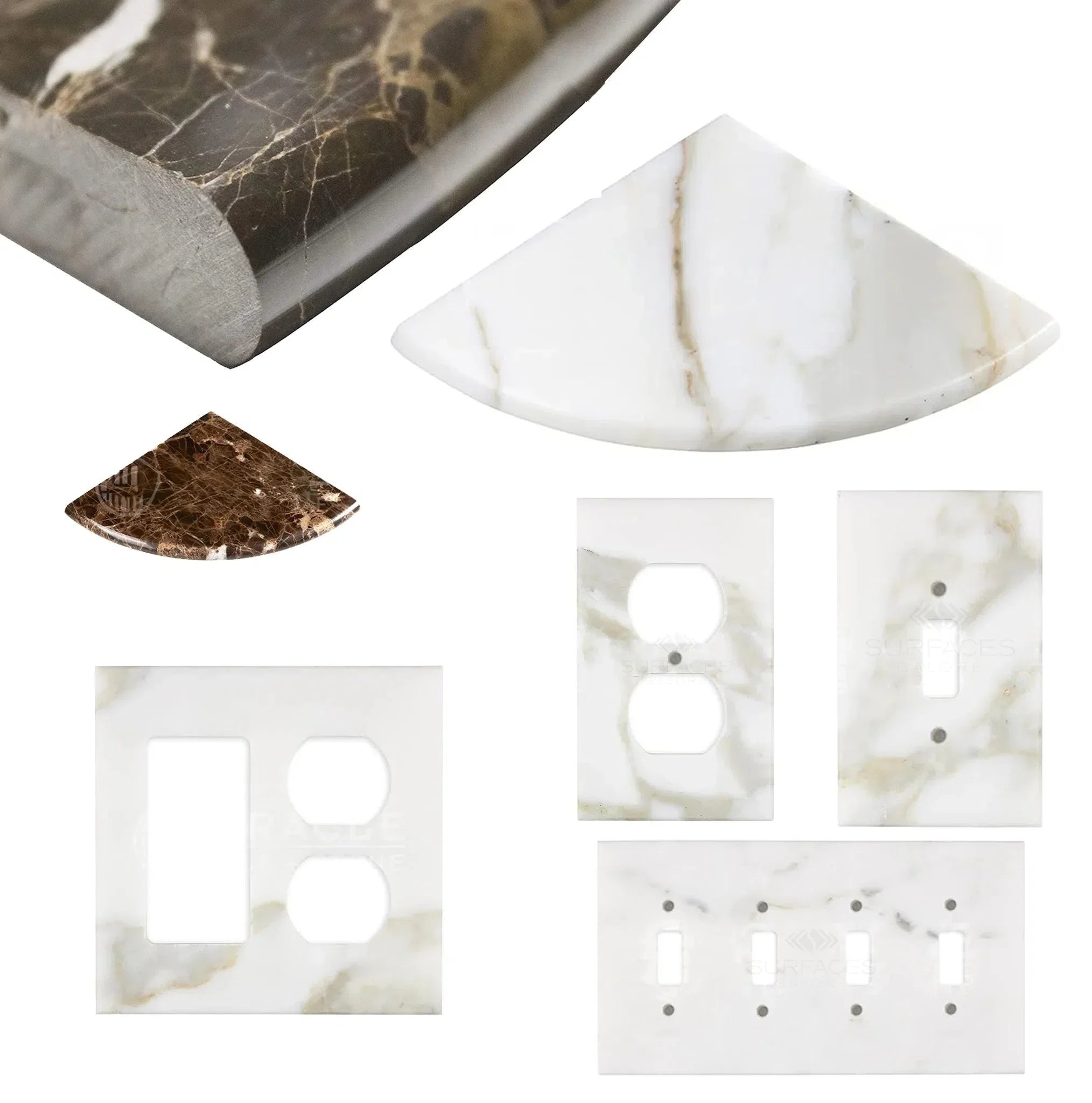 Wall Plate / Switch Plate
Wall Plate / Switch Plate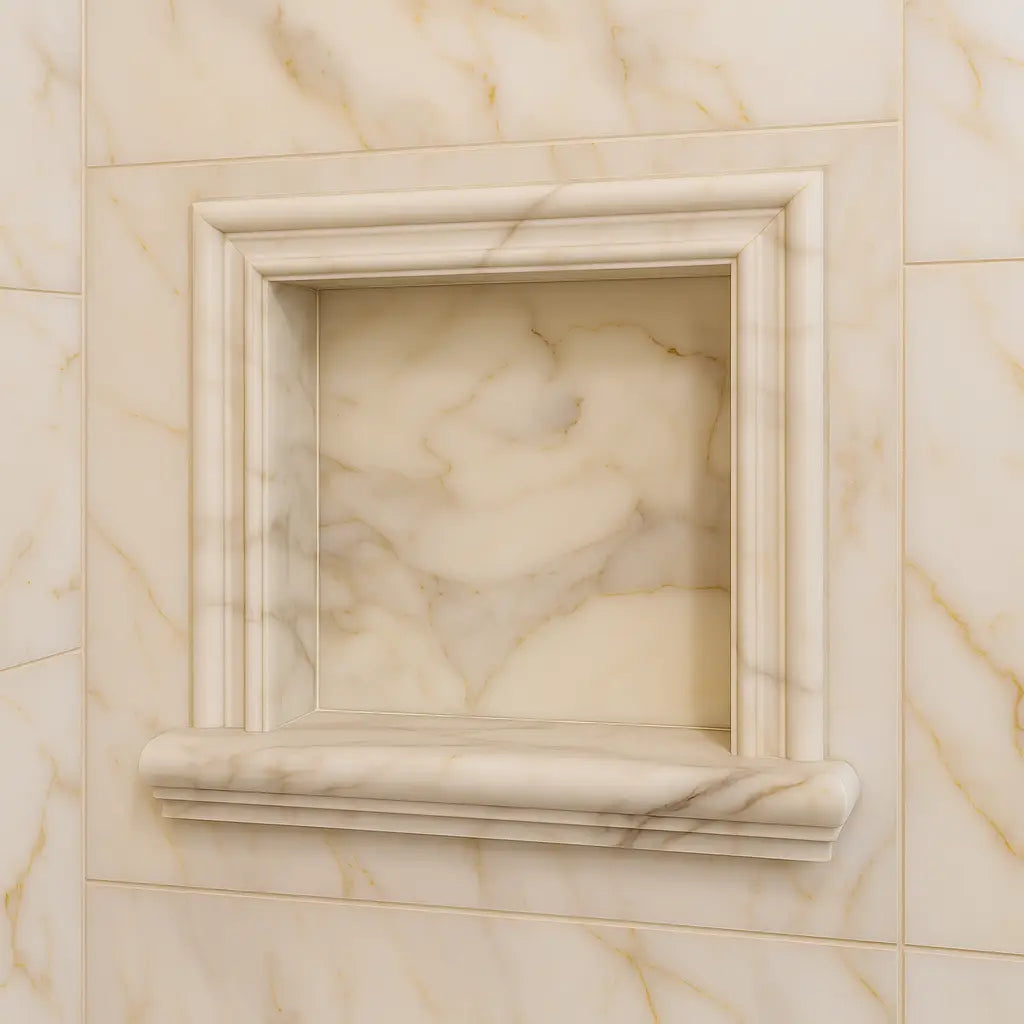 Shampoo Niche
Shampoo Niche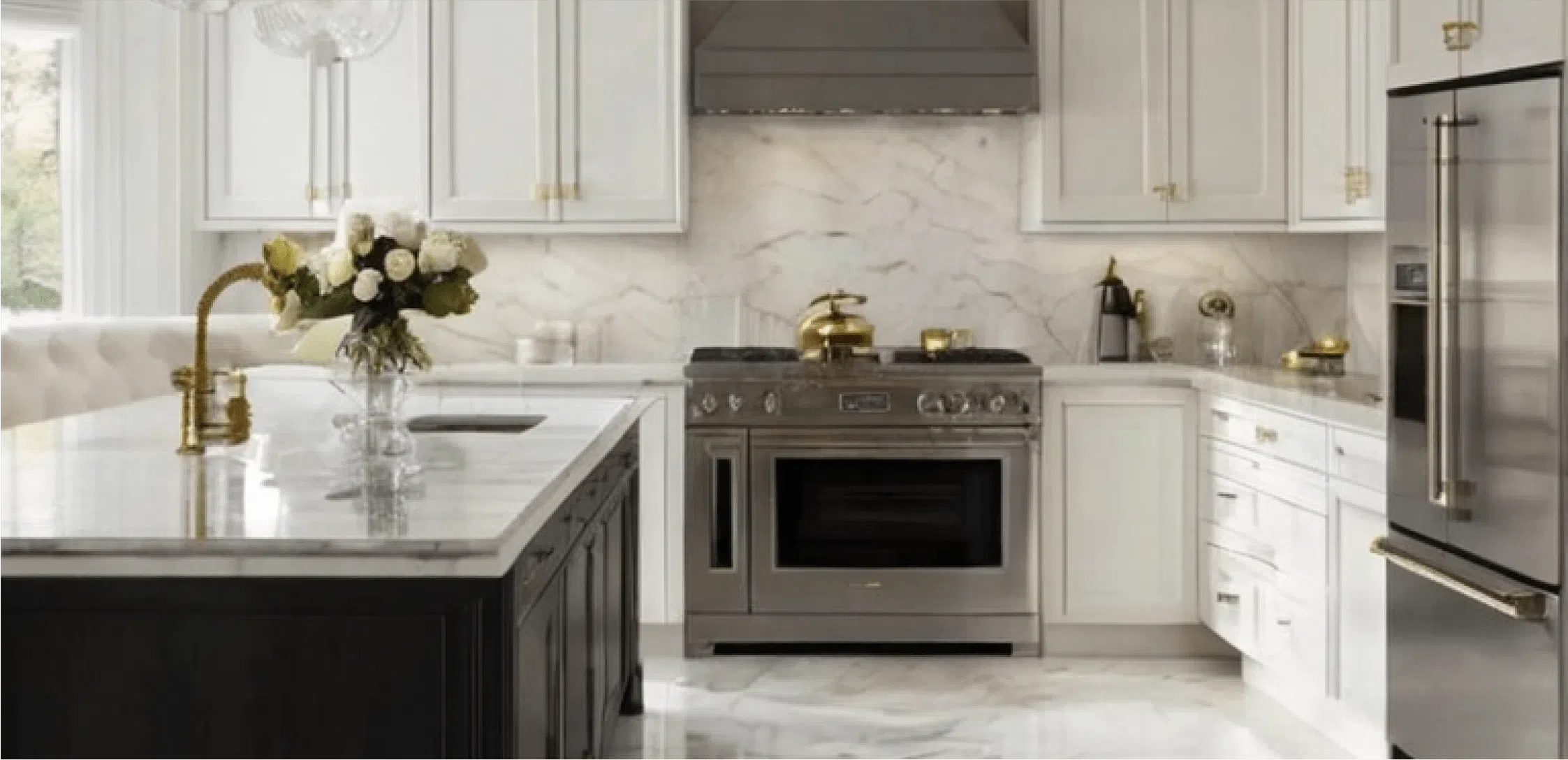 Corner Shelf
Corner Shelf Clearance
Clearance





Leave a comment